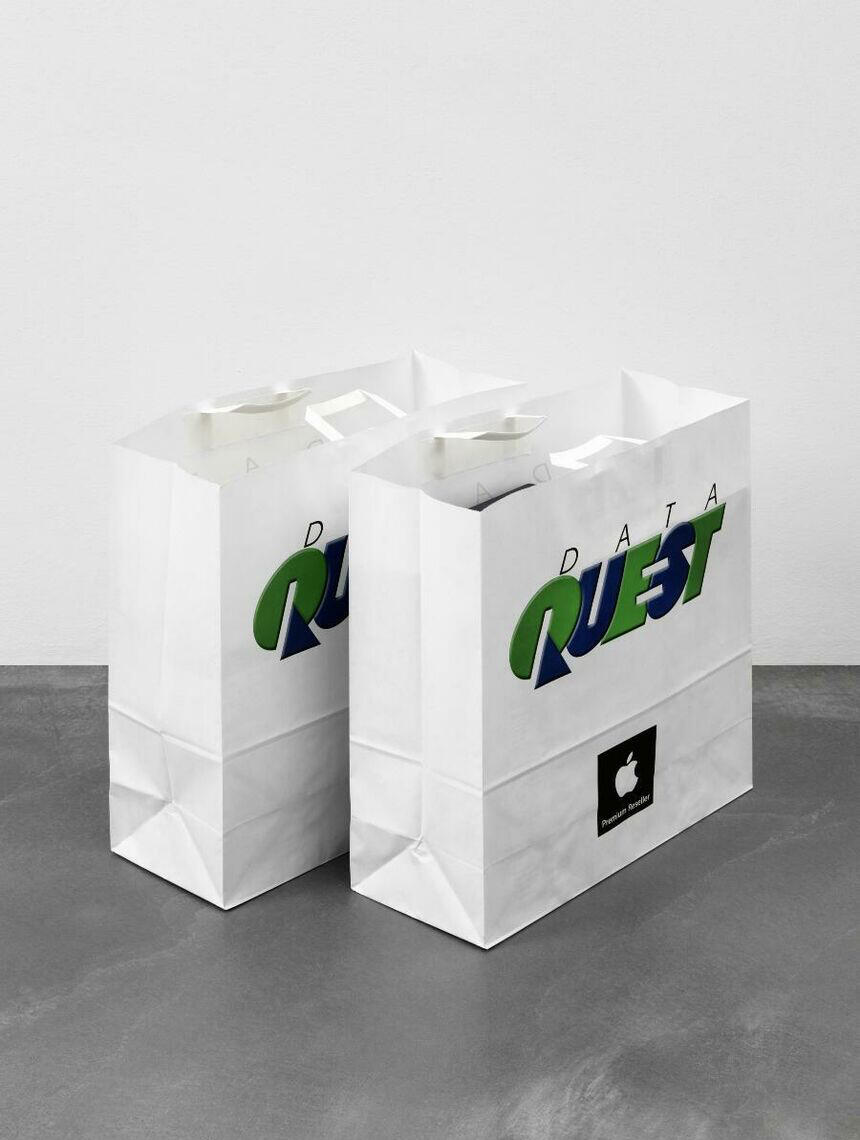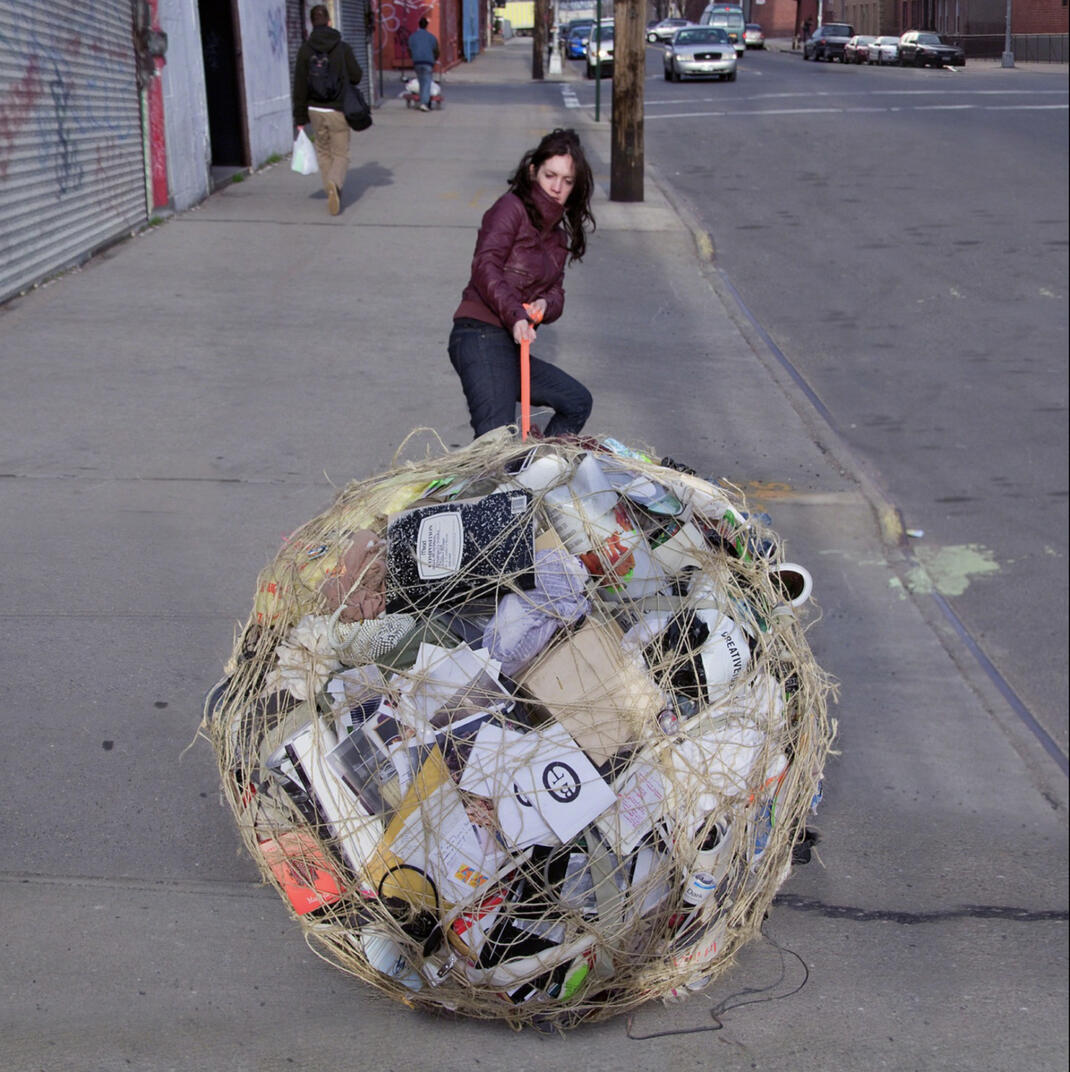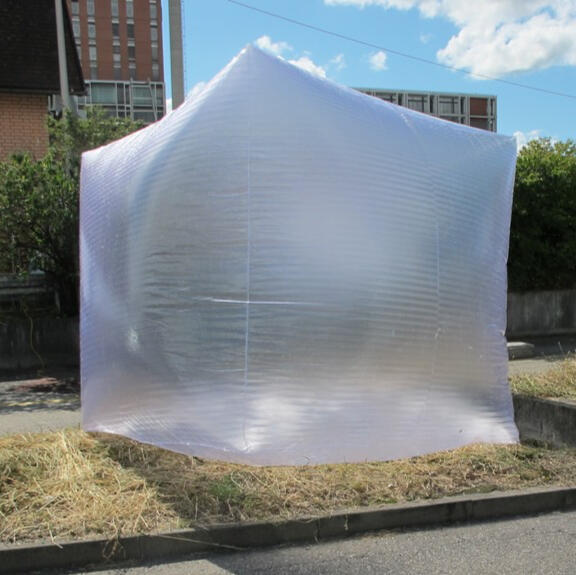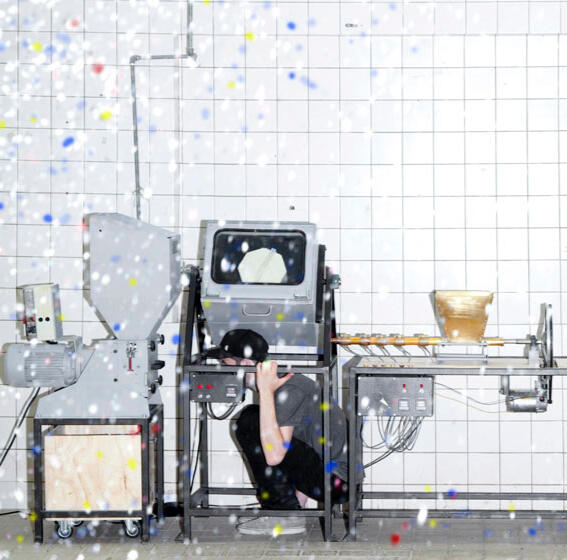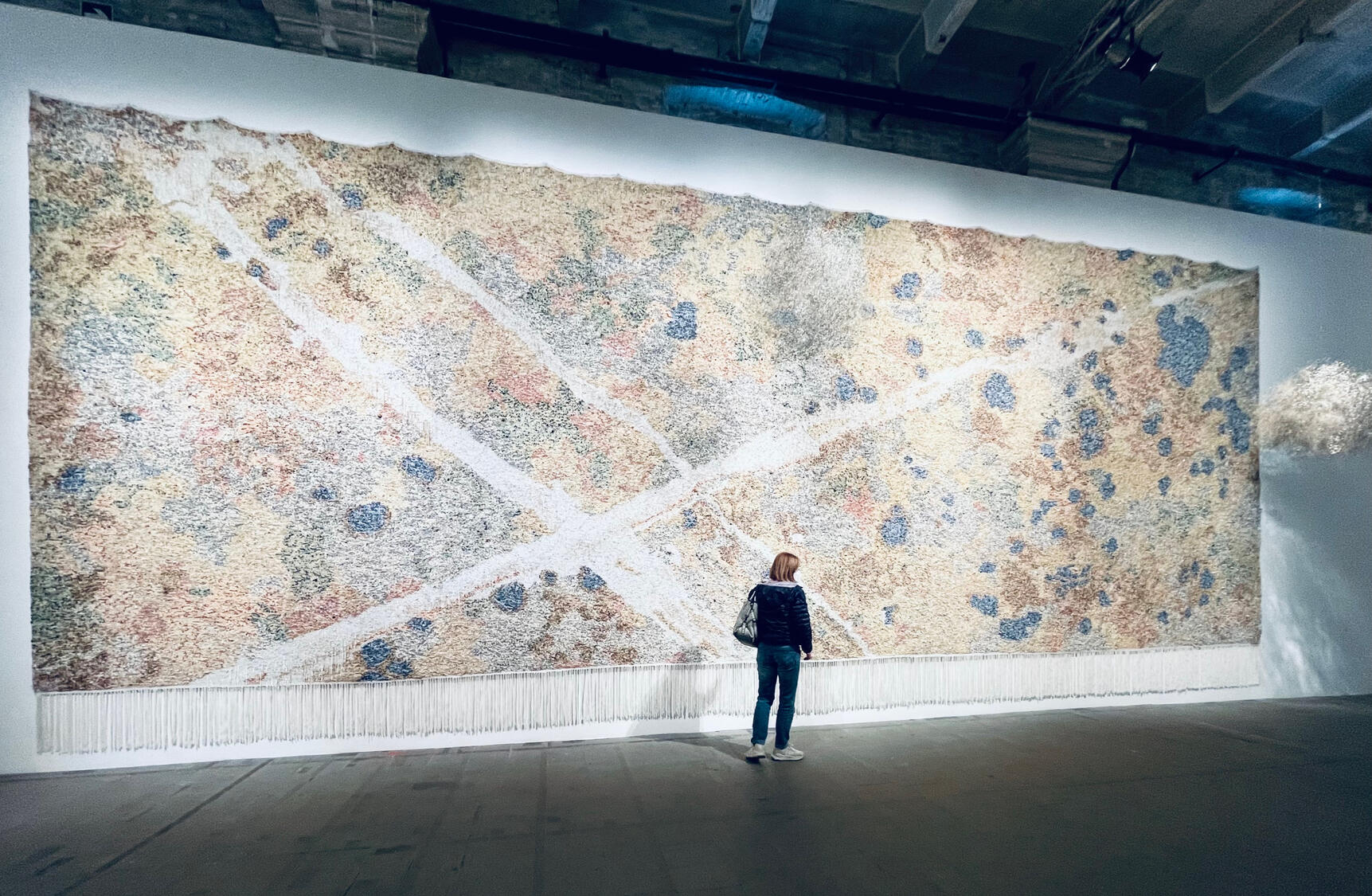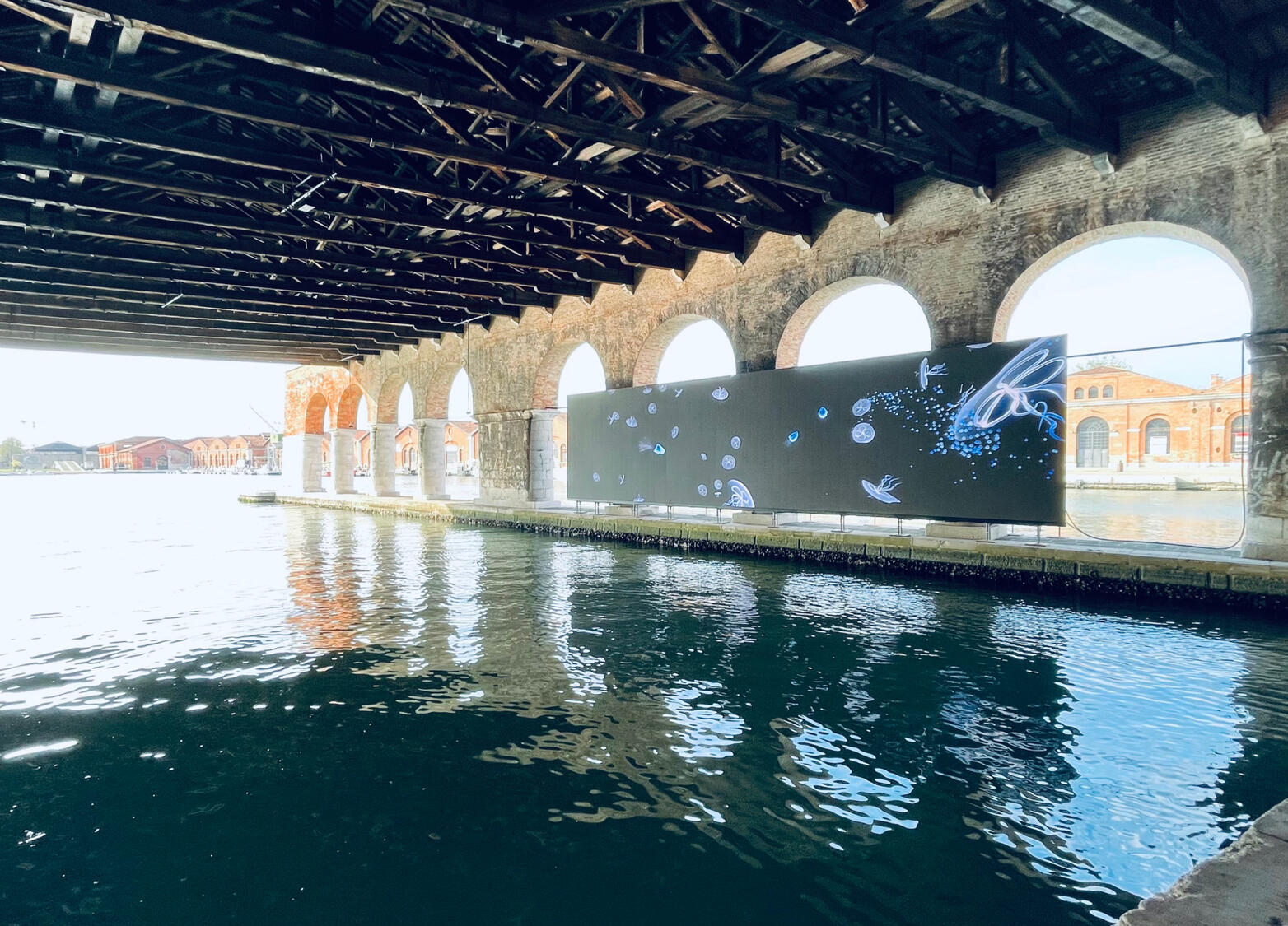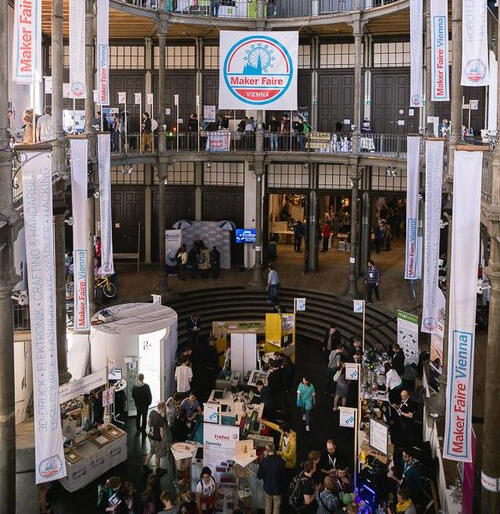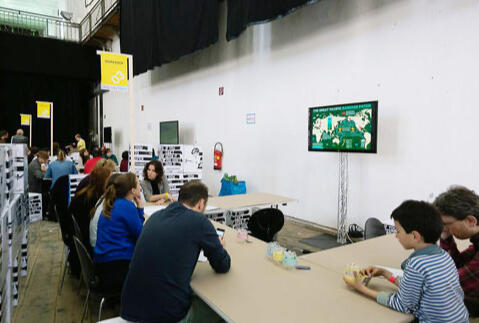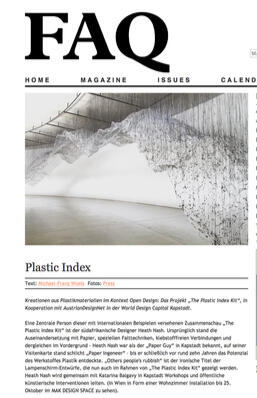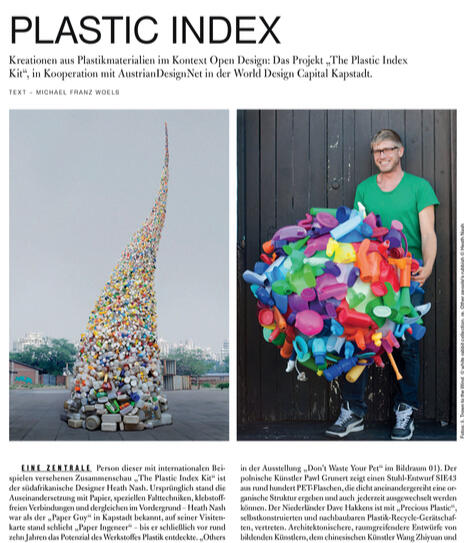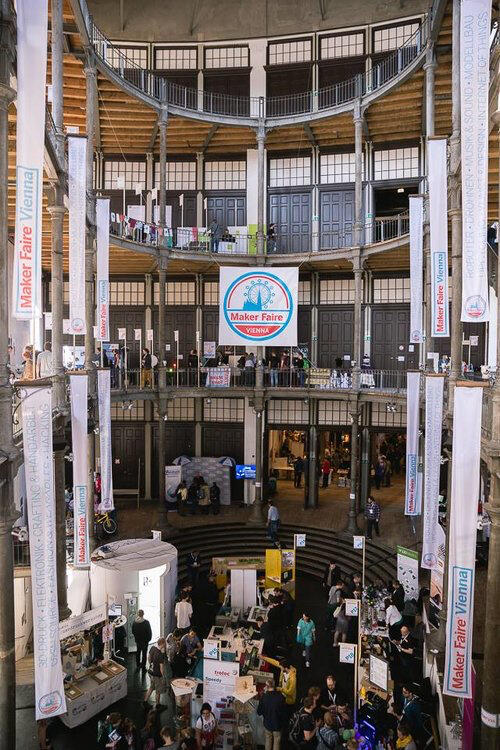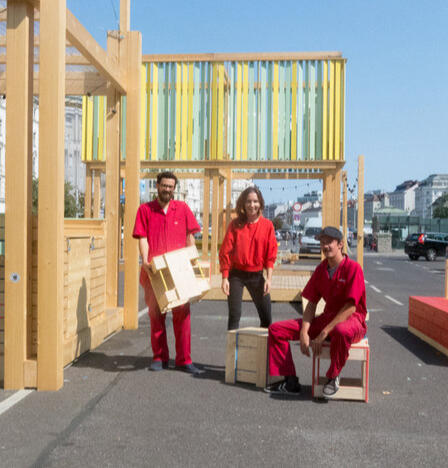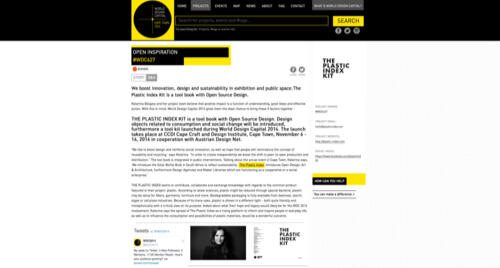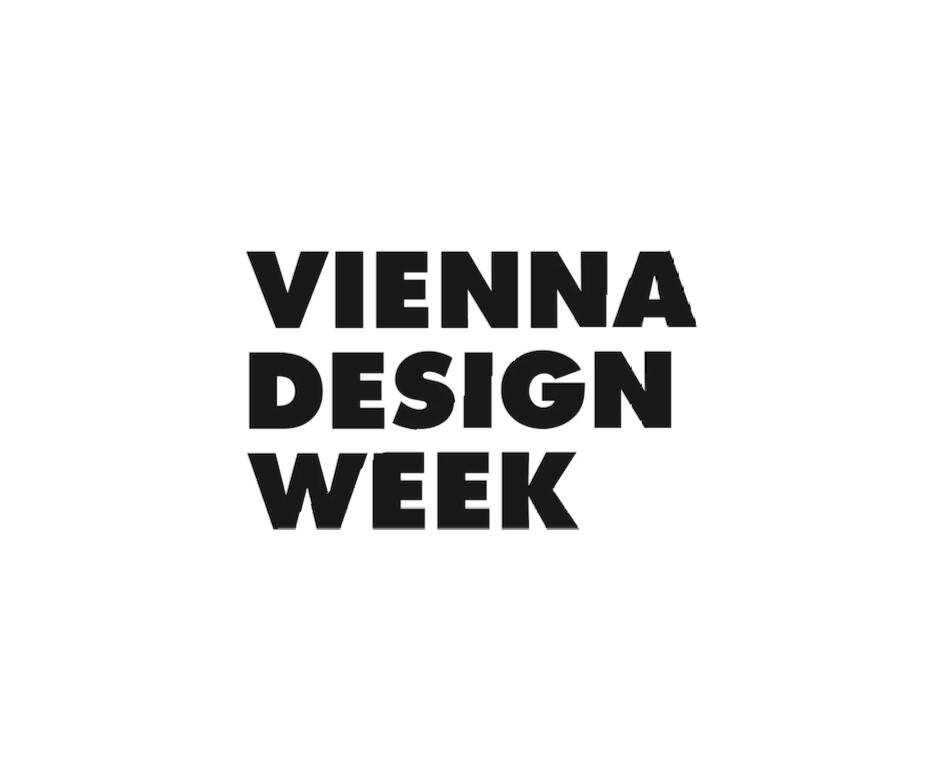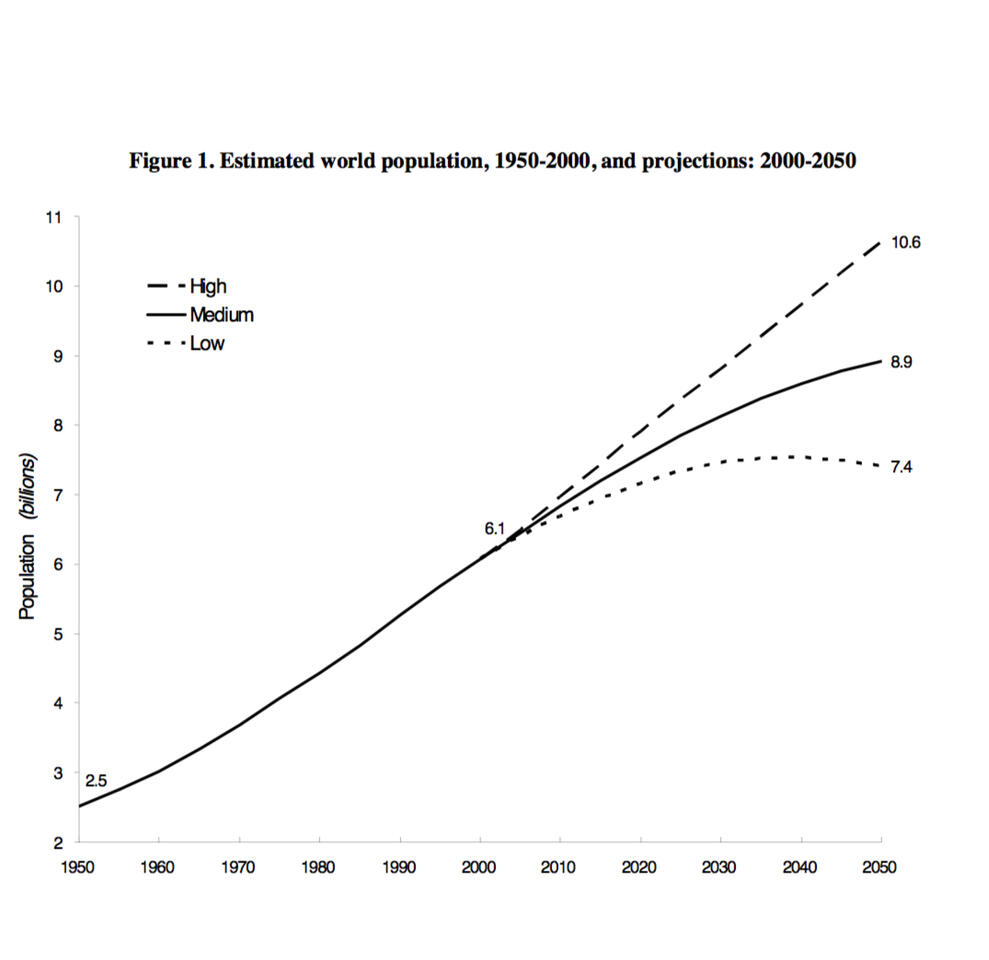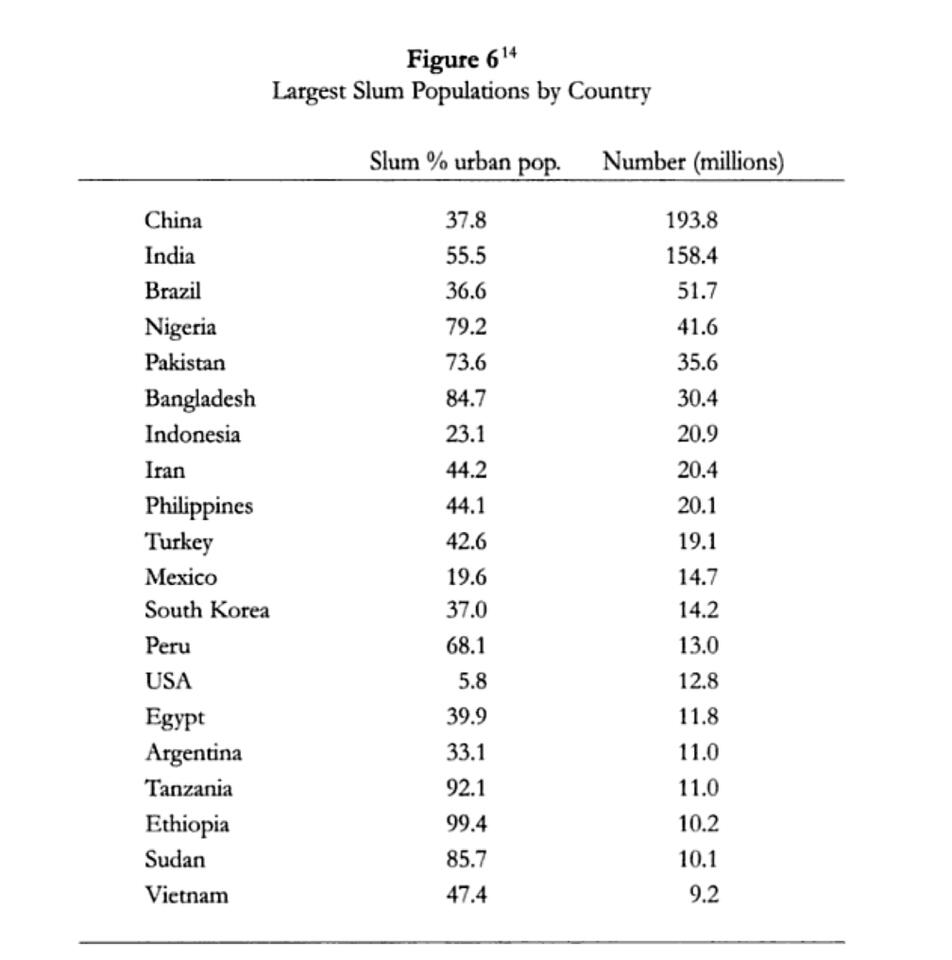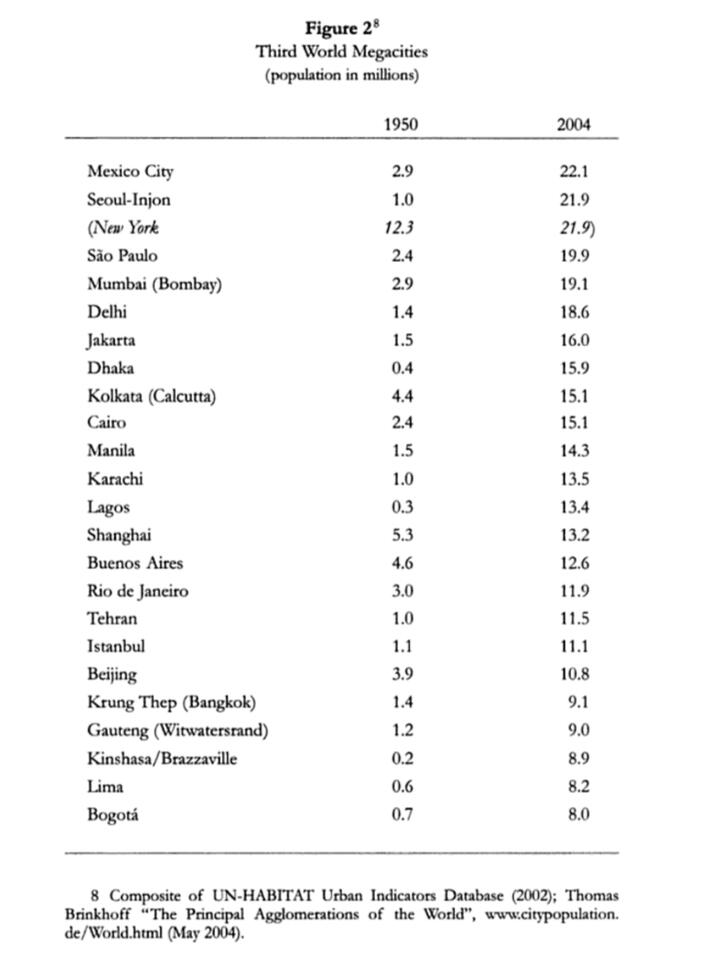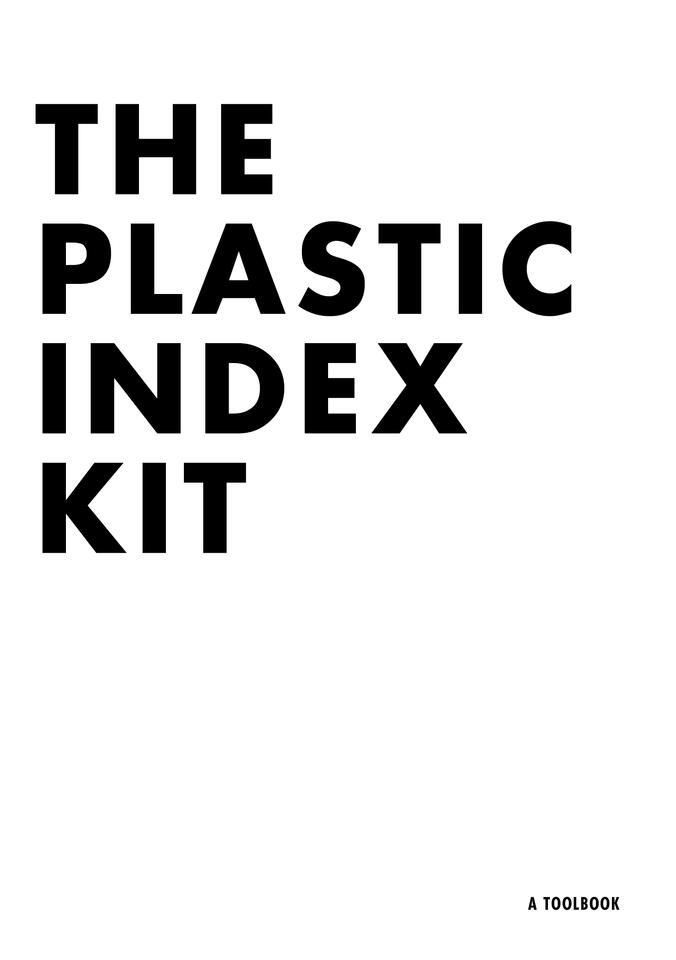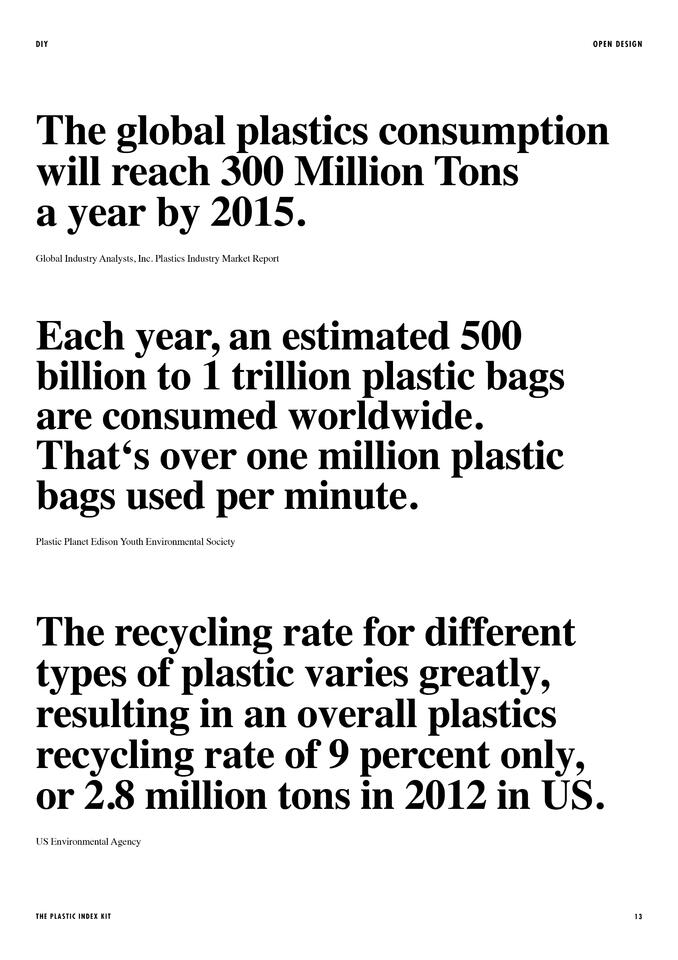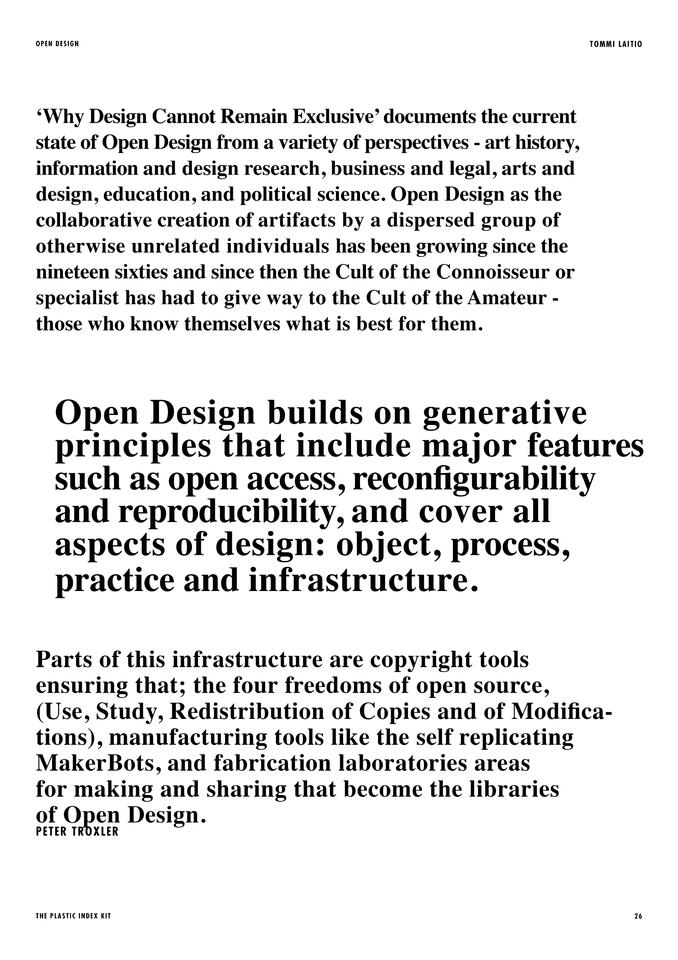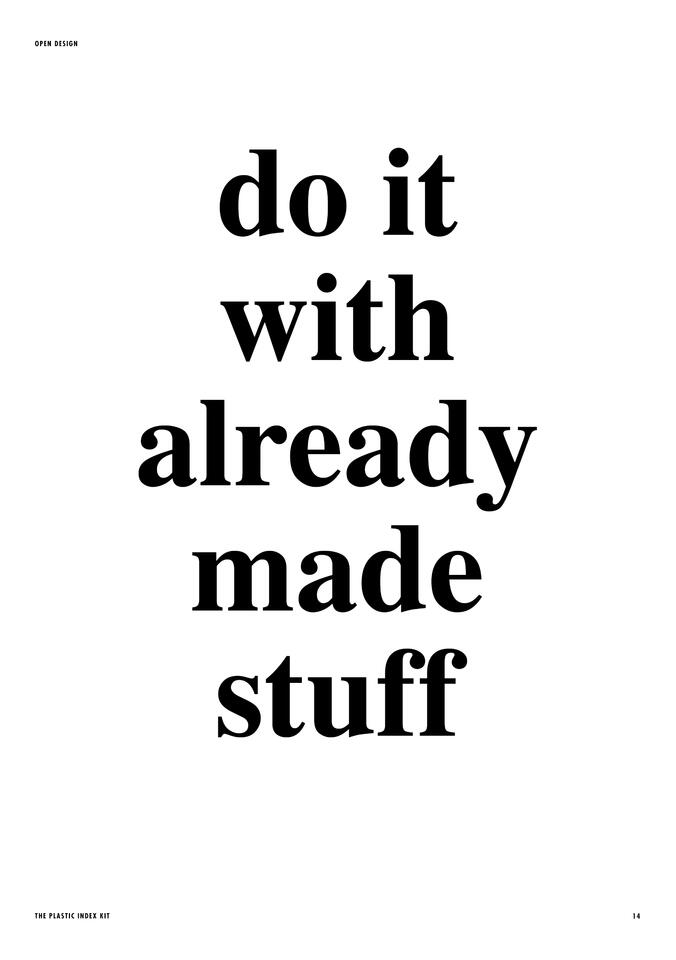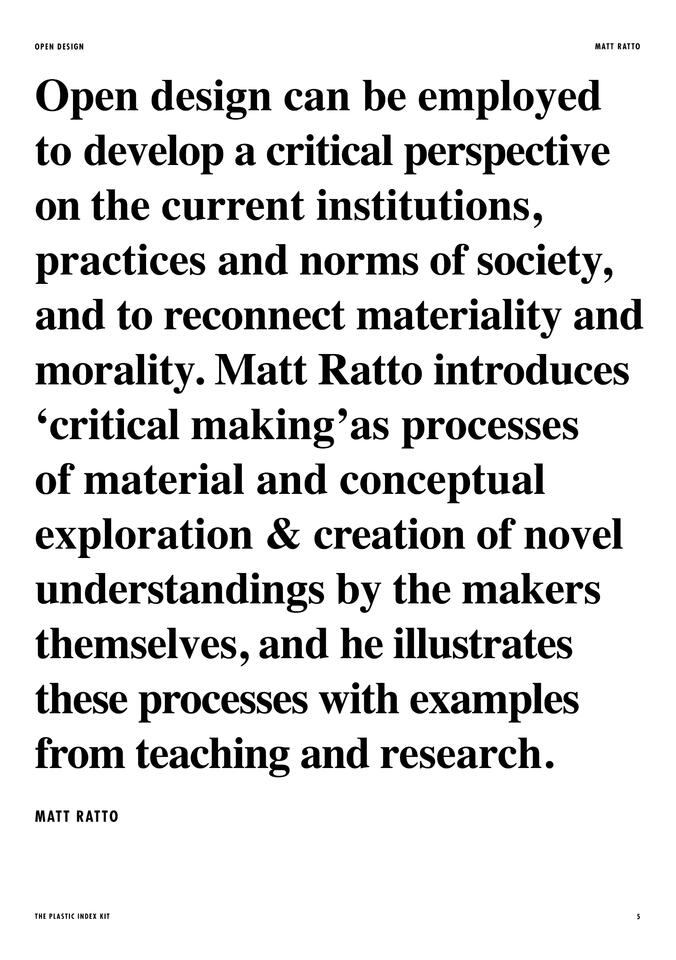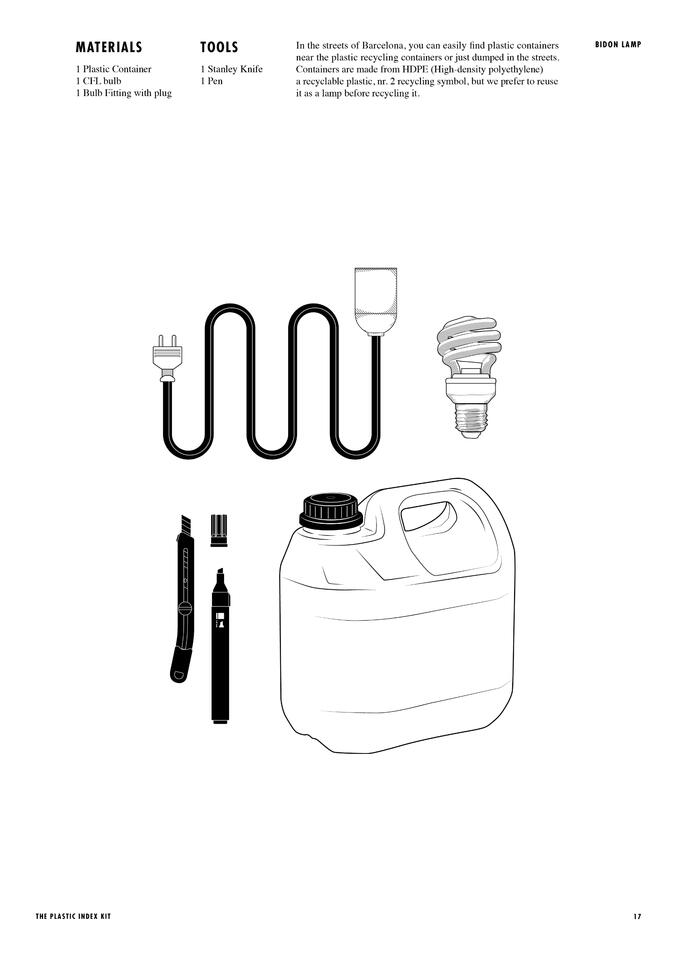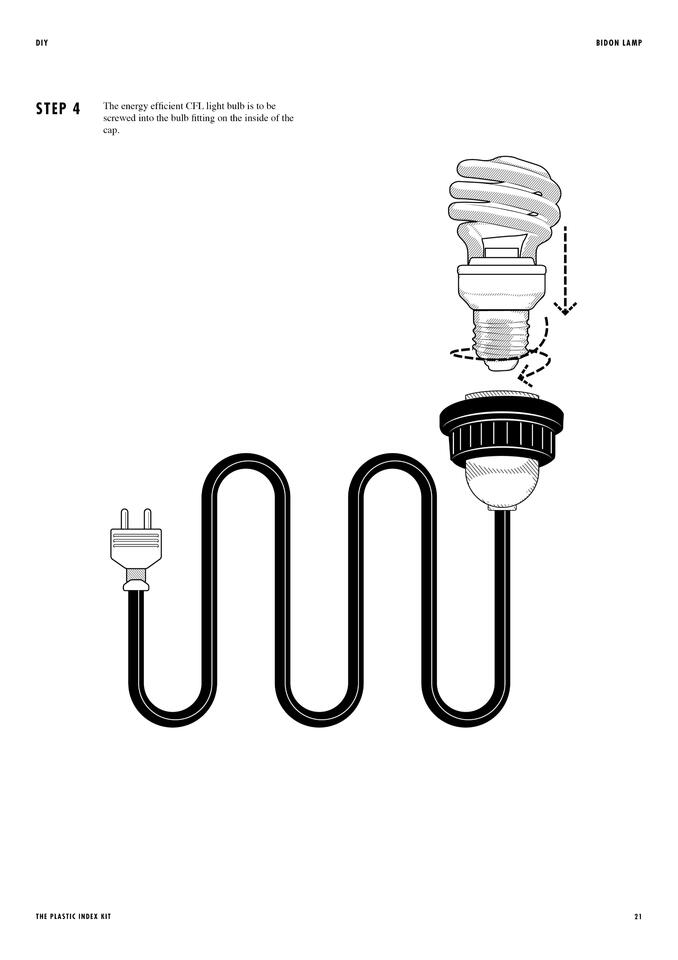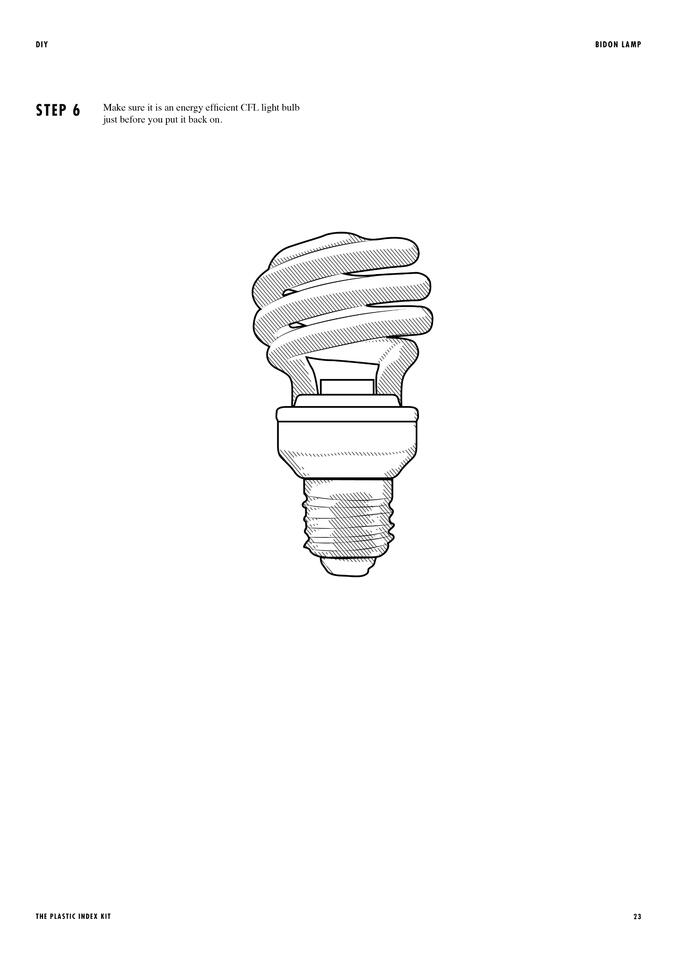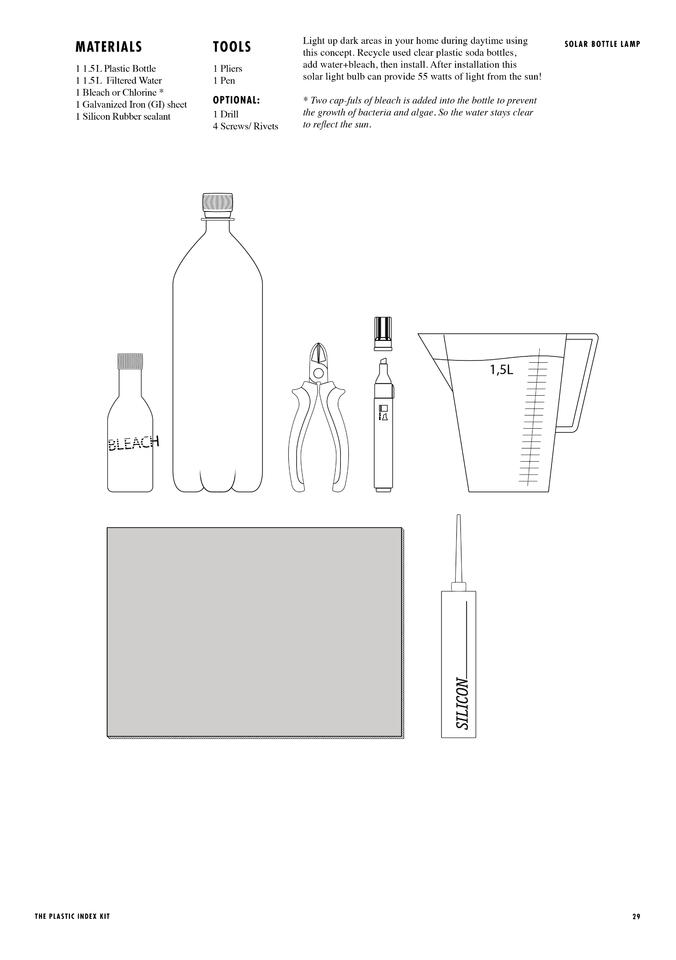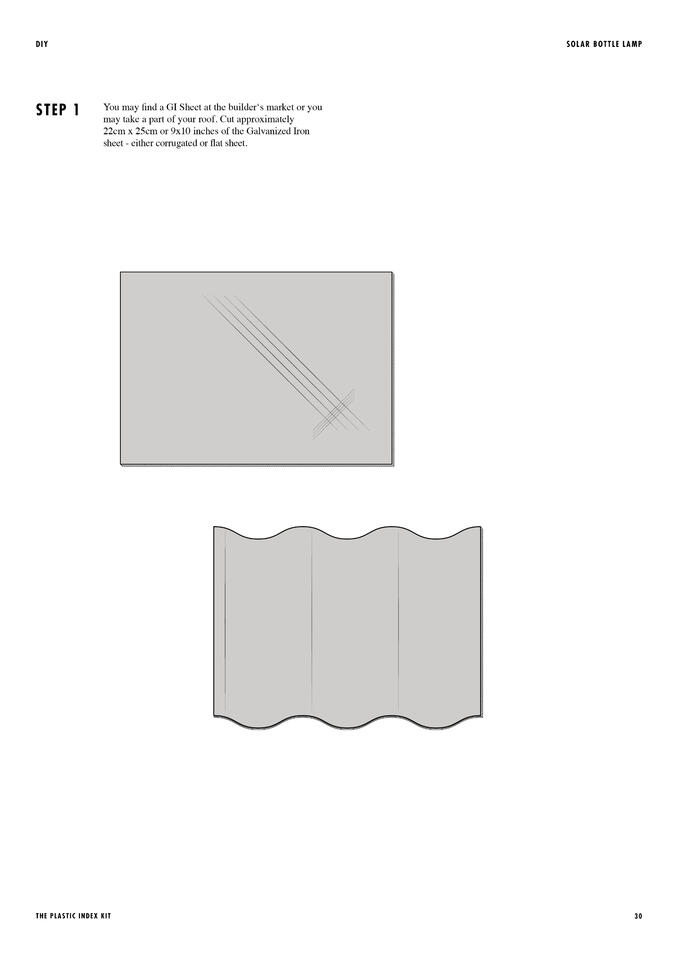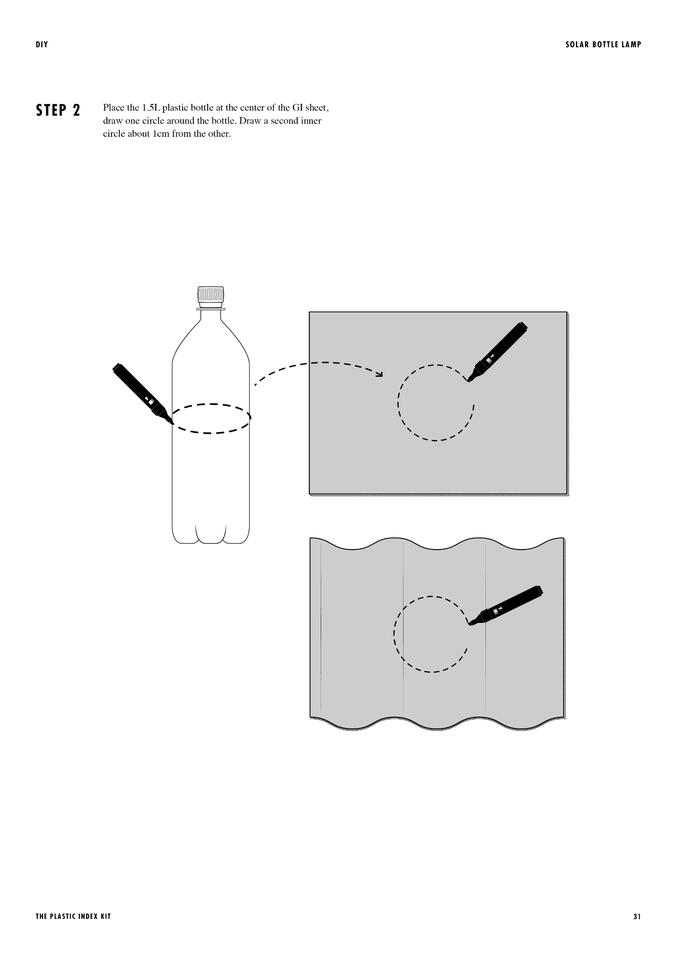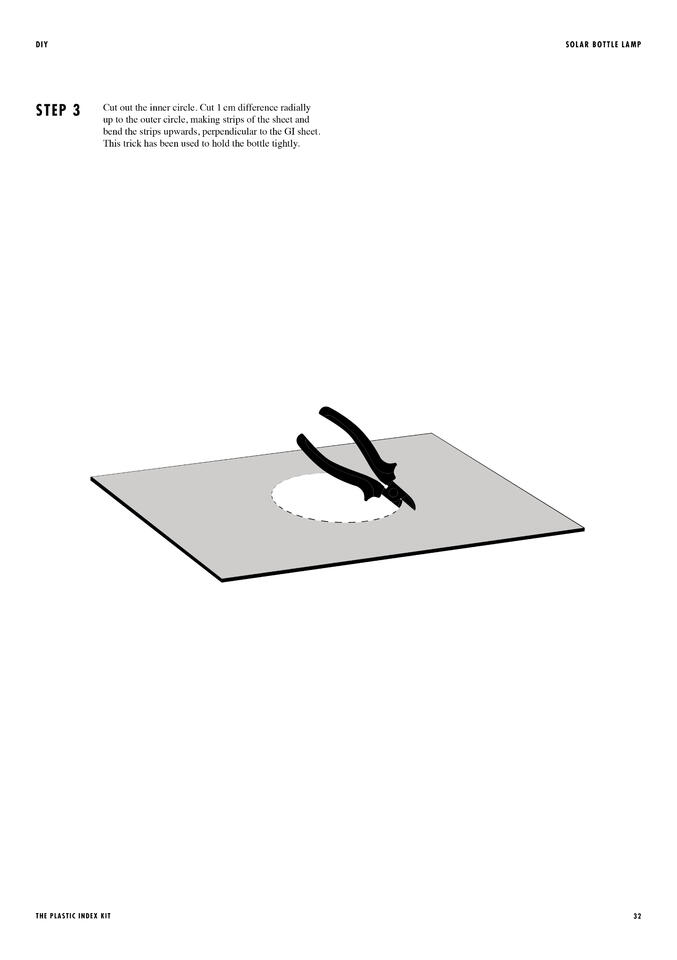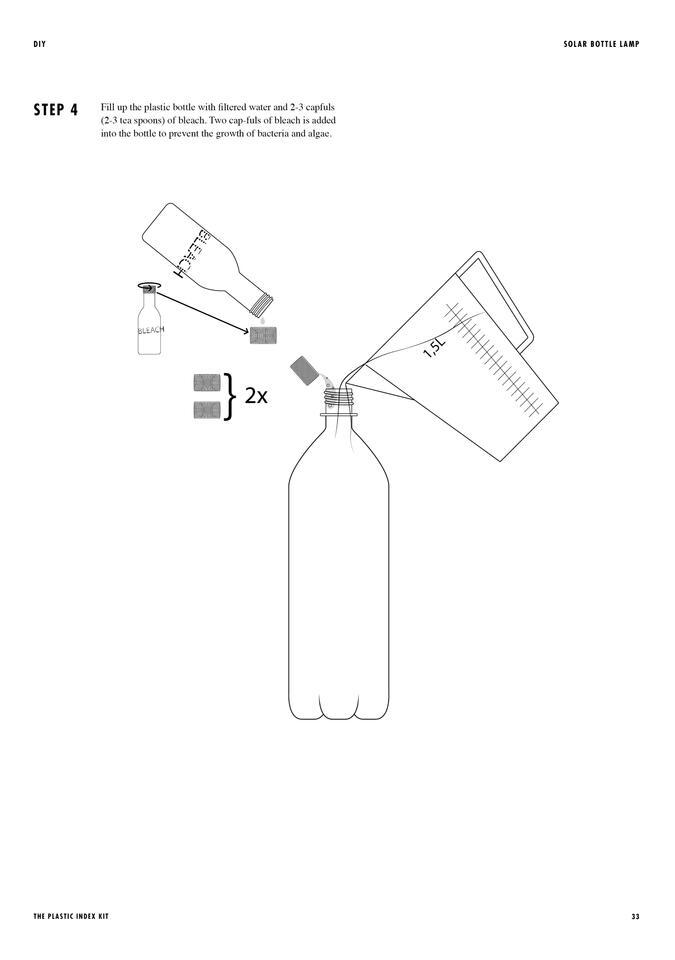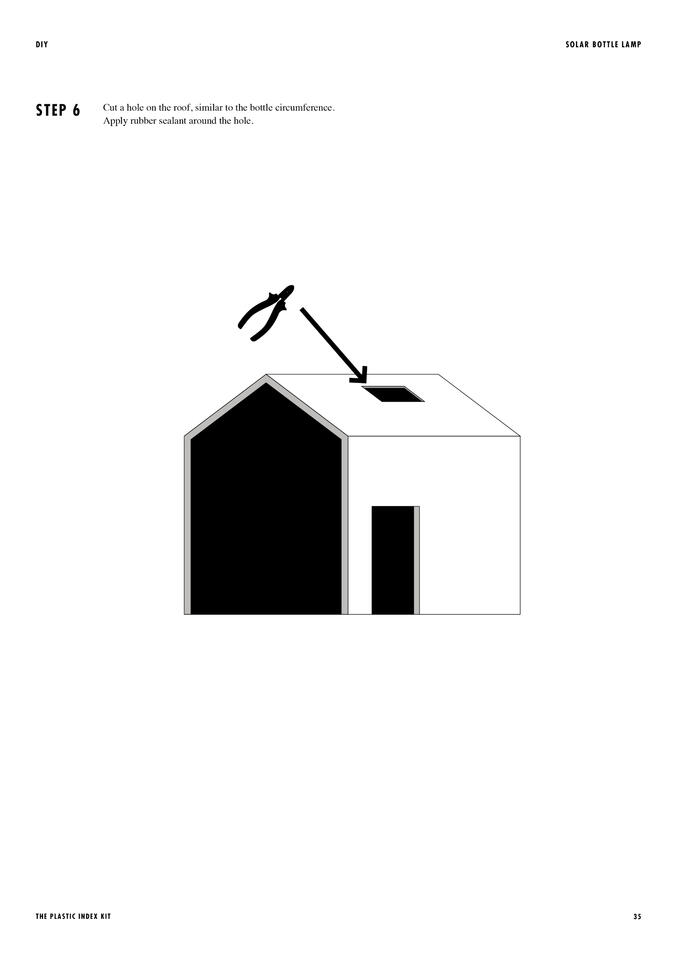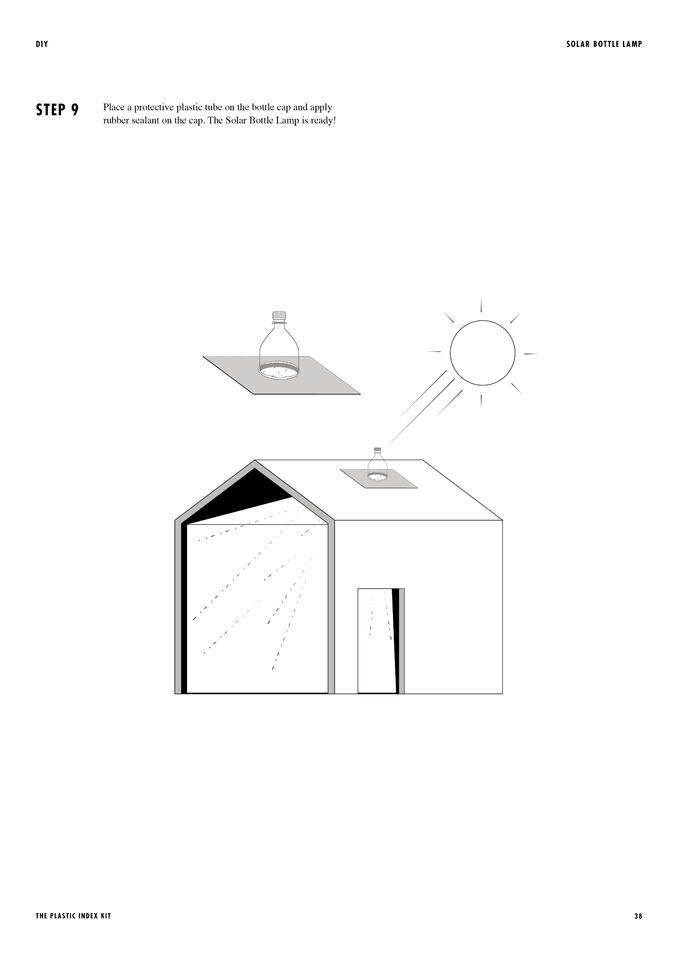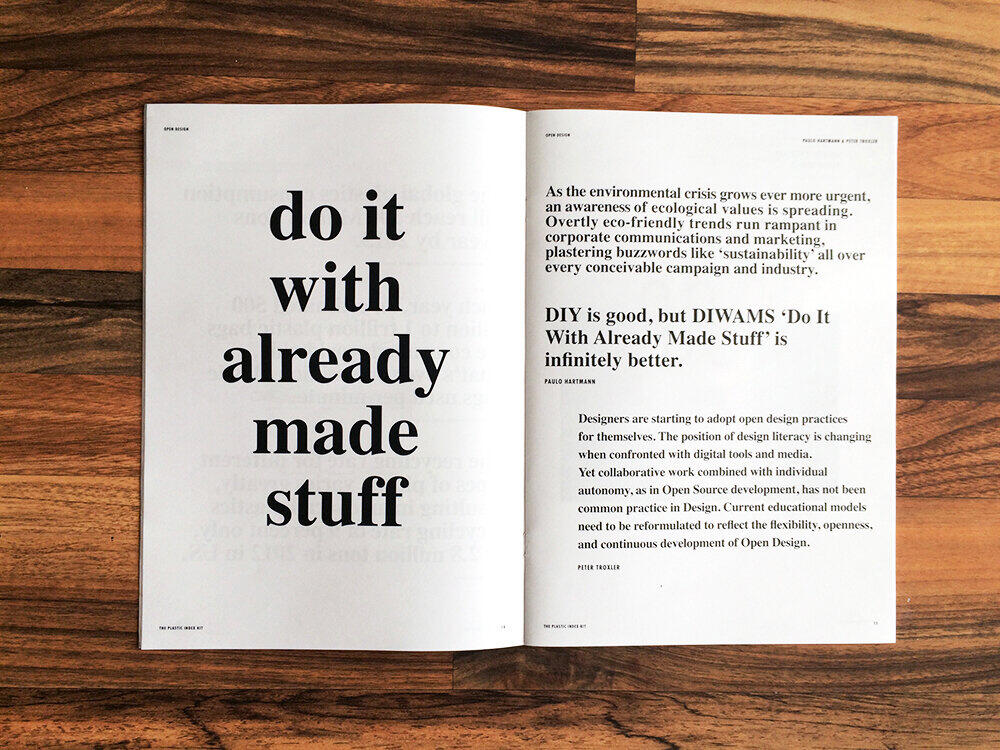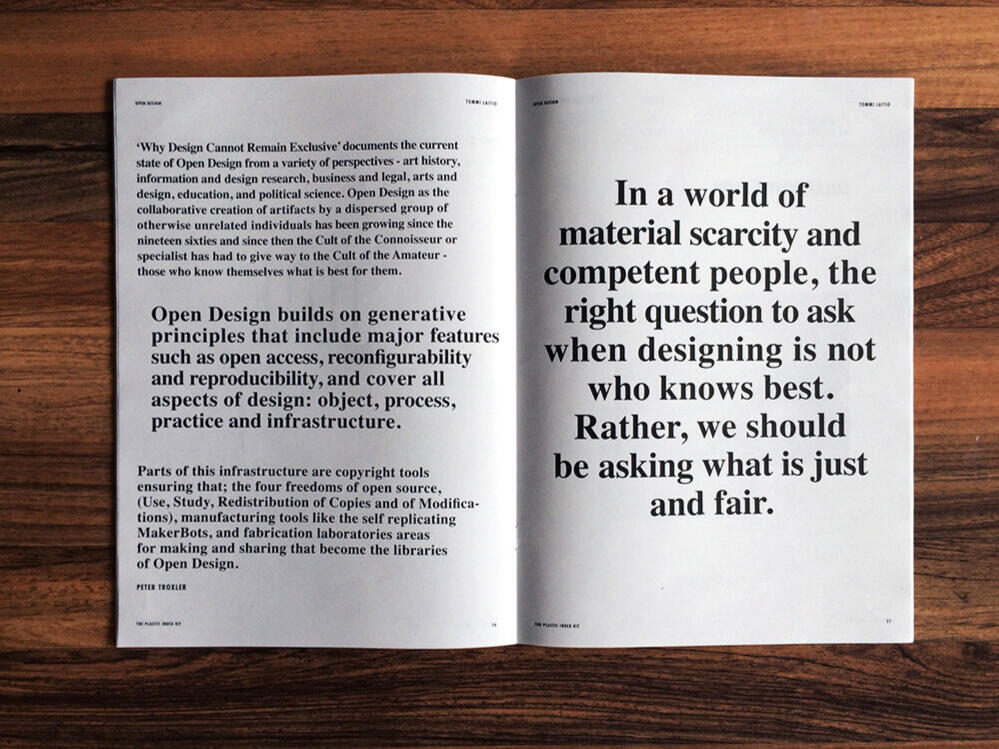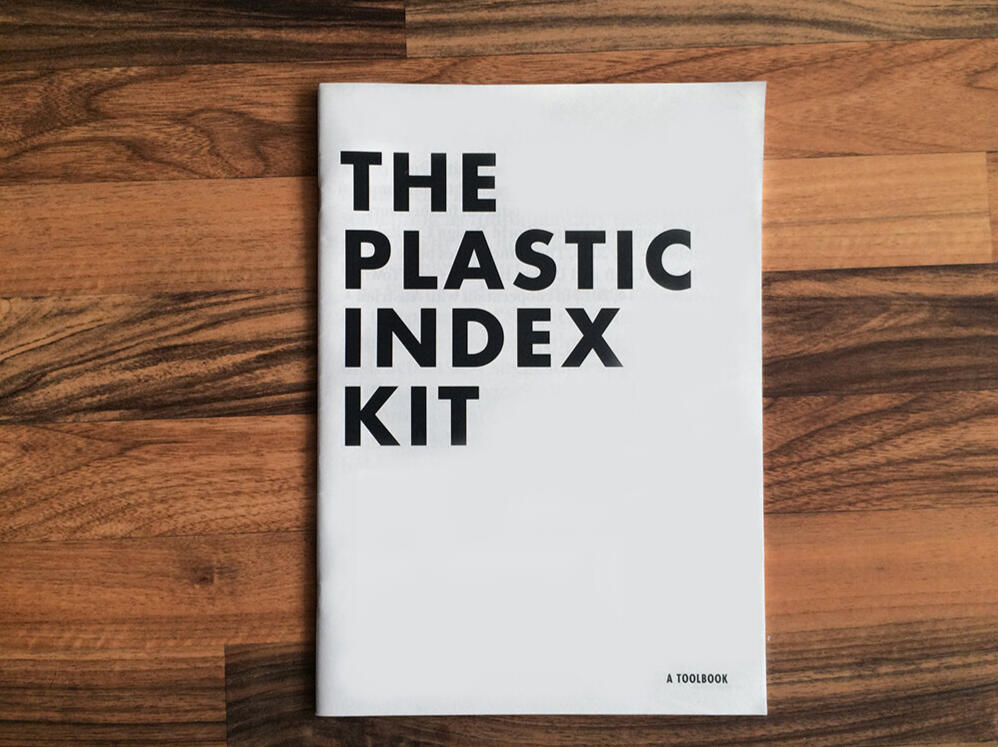THE PLASTIC INDEX
Future ecologies | Research | Curatorial projects in art, culture, science and architecture est. 2013



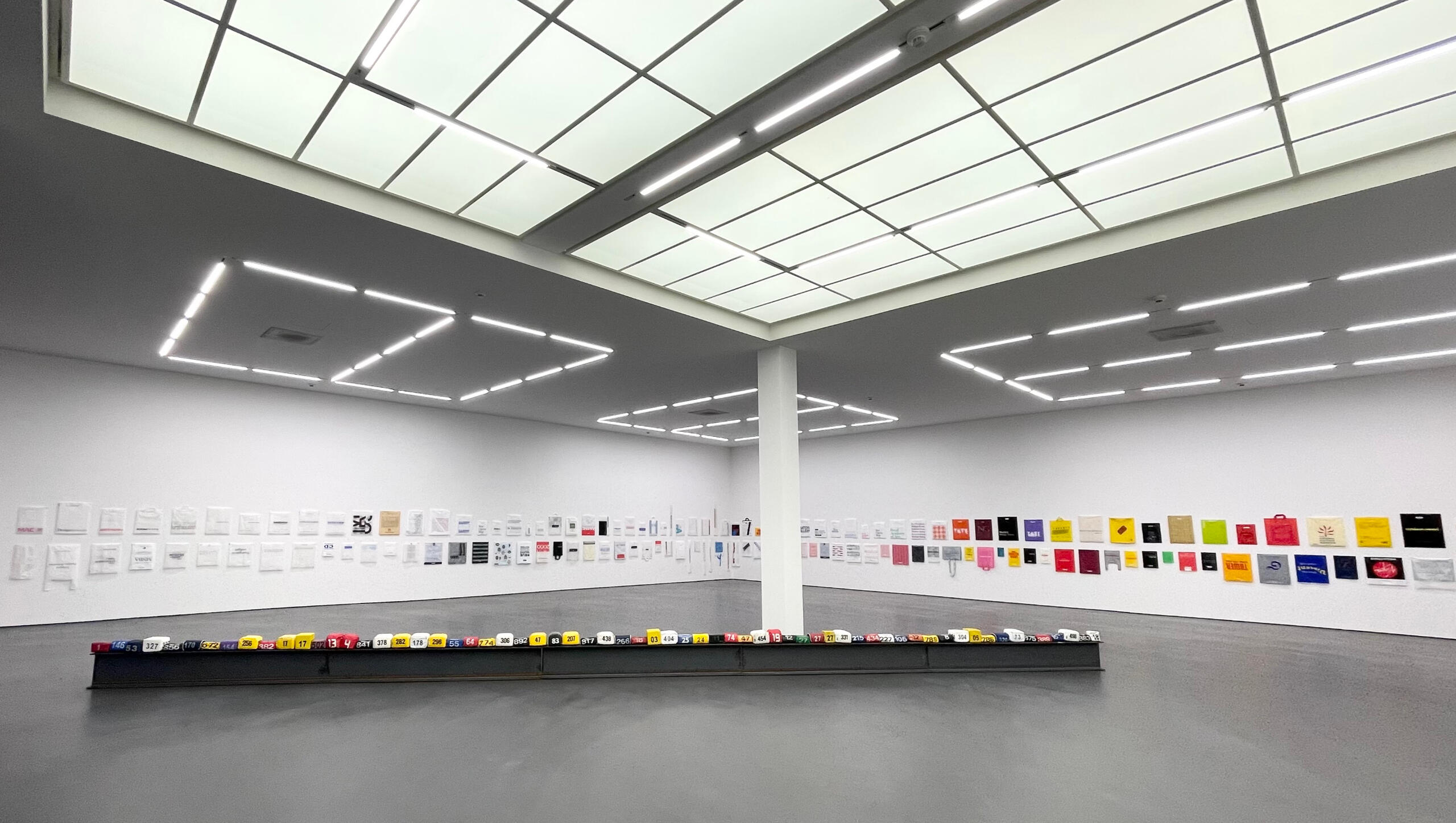

The Index e.V. mediated on future ecologies, art and culture in projects for public engagement. The Index guest-lectured at Art and Design fairs, on campus, in schools, colleges and in educational programs. In the scope of various projects, it served as a curatorial platform and association for interdisciplinary mediation and knowledge transfer in innovation and sustainable transformation.History
The Plastic Index was founded in Cape Town, South Africa, in 2013, based on global research on demographic change. A publication was published and combined with a design showcase to reflect on waste and material culture. The Plastic Index mediated and established projects in culture, sustainable architecture, design and contemporary art. The Index e.V. mediated on sustainable projects in strategy and best practice.Board Members
Viktor Jagsch is an Architect, Architectural Planner. Viktor studied a Master's degree in Architecture and Urban Planning, he finalized the Civil Engineering examination and obtained a Post-graduate degree in Media and Technologies. Viktor Jagsch plans and executes projects throughout Austria and Switzerland.Katharina Balgavy is a curator, producer, and strategic consultant. Katharina studied International development studies, Managerial Business Economics and Cultural studies. She curated and contributed to panels and exhibitions like Berlin Art Week, Vienna Design Week, 'If Yesterday Was Tomorrow What Is Today'; 'Making Africa: A Continent of Contemporary Design' at The Guggenheim Museum Bilbao; 'The Grid' at the Castle of Good Hope, Cape Town among others.
The Index e.V. consisted of a board and team of Architects, Scientists, Curators, Consultants in Sustainability, Business Intelligence and Business Management. We span a global network and Think Tank in science, consulting, in architecture, design, arts and culture.We define CSR as corporate social and sustainable responsibility which is an important element of good corporate citizenship, alongside responsible and future-oriented governance.We mediated research, curatorship and corporate sustainability for institutions and stakeholders in corporate sustainability programs, corporate and leadership initiatives, involved in Environmental, Social, and Governance (ESG) investing.Say hello. We make things.
[email protected]
World Megacities Population
UN World Population to 2300
Case Studies 2013
Design for the Real World: Human Ecology and Social ChangeVictor J. Papanek (1923–1998), b. in Vienna, Austria, was a designer, theorist, lecturer and author, emigrating to the United States to study at the Massachusetts Institute Technology. Educated at MIT and Cooper Union, Victor Papanek was briefly a student of Frank Lloyd Wright early in his career. Buckminster Fuller wrote the preface to the first English language edition of Papanek’s seminal publication Design for the Real World: Human Ecology and Social Change (1971). The book’s ideas and uncompromising critique of contemporary design culture initially divided the design community. Ultimately, Design for the Real World: Human Ecology and Social Change was translated into twenty-three languages, it remains one of the most widely read design books to date.“Design must be an innovative, highly creative, cross-disciplinary tool responsive to the needs of men. It must be more research-oriented, and we must stop defiling the earth itself with poorly designed objects and structures.”
– Victor Papanek

“The only important thing about design is how it relates to people.”
– Victor PapanekIn the course of his career, Papanek applied the principles of socially responsible design in collaborative projects with concerns such as UNESCO and the World Health Organization. He consistently strove to use design as a force for the improvement of life quality in developing countries and peripheral communities in Europe and the US. He travelled and published widely, and through intensive research incorporated the aesthetics and practices of vernacular design into his thinking and teaching.“Advertising design, in persuading people to buy things they don't need, with money they don't have, in order to impress others who don't care, is probably the phoniest field in existence today.”
– Victor PapanekPapanek’s other publications include Nomadic Furniture I (1973), Nomadic Furniture II (1974); How Things Don’t Work (1977). He is sole author of Design For Human Scale (1983) and The Green Imperative (1995).
From Best Design to Just Design – Tommi LaitioCan open design contribute to the world’s bigger problems, such as depletion and squandering of natural resources, population growth, consumerism and widespread poverty? Can pooling knowledge and resources, re-evaluating the concept of time, and facilitating user participation help open design make a strong contribution to sustainability? In a world of material scarcity and competent people, the right question to ask when designing is not who knows best. Rather, we should be asking what is just and fair.The world’s problems are rooted in moral bankruptcy that underlies all the systems in which we live and operate. Over 90% of the resources taken out of the ground today become waste within three months. 1To avoid the catastrophic effects of climate change, we need to cut our carbon emissions to a tenth of the present level. Approximately 75% of the world’s population live in countries where national consumption exceeds the planet’s bio-capacity.2 The world’s population is expected to grow by 50% in the next forty years. That will make nine billion of us. Consuming less will not be easy. In the developed world, the demand for new products, different lifestyles and more active forms of participation grows as people gain new skills, have more expendable time and money, and find themselves looking for meaning in their lives. Meanwhile, basic standards of living are far from being met in many parts of the world. While the developed countries are dealing with hedonistic angst, approximately 50,000 people die daily from poverty-related causes – most of them women and children. One billion people go to sleep hungry every day.In a world of material scarcity and competent people, the right question to ask when designing is not who knows best. Rather, we should be asking what is just and fair. The world as it is, in all its flawed complexity, is the ultimate design challenge of today. The issues that need to be tackled do not have a clearly identifiable owner or one simple solution. We’ve entered an era of co-existing versions of truth that may not be fully compatible, even to the point of being mutually exclusive. The ultimate problems of this time are results of the way we eat, interact with others, exercise and consume. This is why they are also far too serious to be left entirely to professional designers.This complex combination of problems calls for open design. So far, professional designers have dealt with material shortages by minimizing their negative impact on production and distribution. Classic approaches to market segmentation no longer function when factors like age or ethnicity no longer define ambitions and desires. Neither professional-led design nor classic approaches will be broad enough to solve pandemic problems like climate change and other worldwide anthropogenic issues, stemming from an absence of moral responsibility. The facts are clear: we need a full paradigm shift; minor tweaks to traditional methods will no longer suffice. The challenge that we all share is to create design that actually solves problems. The questions to be answered become far clearer with this strategic focus. If design is to be used successfully in striving for a fairer place to live, a number of things will be needed, including more participatory tools for understanding the architecture of the problem, quicker ways to test alternative solutions, smarter methods of negotiation and selection, and flexibility in production and distribution.A Tale of Two WorldsFor the first time in human history, more than half of the world’s population lives in cities. According to the UN, in 2020 half of these city-dwellers will live in slums. Aspirations for urban lifestyles are inevitably going to clash. It is harder to build communities when everyone feels they belong to a minority. Strong local communities are fundamental in assisting people in planning their lives, sharing resources and knowledge, developing a sense of home, solving the problems they face, feeling safe, having room to laugh and play as well as building lasting relationships with the people around them. Urban freedoms need to be pursued in ways that do not limit other people’s freedoms. Community structures necessitate government investments as well as new inventions in affordable communication, food production, public transport and housing.It is in cities that the world of tomorrow is being made, as they build resilience against global turmoil. Issues like local food production are being acknowledged in government programmes. However, in order to share their ideas and resources, people need to feel comfortable and safe. This poses a tremendous challenge, especially in societies where people are most affected by global injustice. When people are struggling to meet their most basic day-to-day needs, the motivation to search for solutions together is small. The same applies to marginalized groups, even in developed societies. When people consider themselves victims of circumstance, opening up to others takes several preparatory steps. Equality, good public spaces and education are fundamental preconditions for open design. The same applies to open design for public services – and equal societies are both happier and more cost-efficient.Open design is part of a shift from wow design to 'we design'Even if there are many developments that run parallel in developed and developing countries, there are also vast differences. Developing countries urgently need affordable, yet sustainable solutions using easy-access resources. Initiatives like the non-profit International Development Enterprises 4 in Nepal allow the local farmers to tap into global information without having to spend their limited resources on personal equipment. The cooperatives share phones so that they can check market prices and avoid being taken advantage of in negotiations. Combining local trust networks and striving for sustainability calls for other, better solutions than poor copies of the systems in the developed world. It also tackles one of the pitfalls that growing economies need to navigate: the risk of spending a disproportionate percentage of increased national revenues on technology instead of health and education. Systems like free text messaging, reliable communication networks and easy-to-build recharging systems become crucial.The same logic was used in the development of the Open Source Washing Machine 5 using solar power, loudspeakers or bicycle tires. The design work started from available materials and actual needs of the local communities. This approach to design would make it possible for developing countries to become frontrunners in smart recycling.Smarter CrowdsThe greatest potential in open design lies in building from incentives. According to Michel Bauwens, open and peer-to-peer processes have a built-in drive to seek the most sustainable solution. 6 When the entire process is a negotiation of the common good, there will be an automatic push to search for a solution that can be applied to various situations. As people twist and turn the matter, analysing it from many different angles, the true nature of the problem becomes clearer. A crowd of people will always be able to subject a problem to more thorough scrutiny than an army of corporate anthropologists. In a climate of adaptation and rapid prototyping, we can test the functionality of various alternatives in a faster pace. This reduces the risk of betting everything on the wrong horse, as is often done in the traditional process. Open design is part of a shift from ‘wow design’ to ‘we design’. Making that shift, however, requires broader access to places of experimentation and learning like Fab Labs.The new dividing line is the underlying motives of the people involved: whether things are done for benefit (altruistic motive) or for profit (selfish motive). Legislation and education play a key role in the ongoing change. As Michel Bauwens has pointed out, true for-benefit design leaves room for new people. 7 New people notice undiscovered errors and contribute new resources and new ideas. A good example of design for benefit is Whirlwind, 8 which has in the last 30 years provided thousands and thousands of wheel-chairs to developing countries. Product development collaboration between developing and developed countries has guaranteed that the chairs can handle the rough circumstances. The drawings are protected by a Creative Commons license. The biggest success is the RoughRider wheelchair, produced by local manufacturers and already used by 25,000 disabled people in developing countries.By pooling knowledge and resources, individuals can actually turn the supply chain around. Inspiring examples can be found in the field of architecture. Take Loppukiri, 9 a home for the elderly in Helsinki, Finland. Disappointed by the options for assisted living currently on the market, a group of pensioners pooled their funds and selected an architect to work with them on building residential facilities that would meet their specific needs. The Loppukiri cooperative did not limit their design process to their physical surroundings; they also designed structured activities and living arrangements in consultation with numerous professionals. The people in this community split domestic chores, cook lunch for each other and eat together. All in all, they have efficiently solved one of the greatest challenges of aging: loneliness and social isolation. The co-designed architecture of the building supports this community-based ethos and the members are keen to share their lessons with others. As the example demonstrates, crowds do not make the professional irrelevant. The same approach could be adapted to other groups with special needs. The role of the designer would increasingly shift toward the roles of a trainer, translator and integrator. In order to tap into available resources and the in-depth knowledge held by the group, the designer needs to adapt to their needs and desires. Pooling a number of designers to tackle a bigger community challenge might be a way to win the trust of a new client. In a world where the crowds control the resources, the need for value-driven design grows. This clearly represents a potential growth market for design agencies functioning as a cooperative or a social enterprise.Time Is MoneyOpen design requires a re-evaluation of the concept of time. People are willing to contribute more time to shared initiatives when they have a sense of the common good. True happiness comes from feeling needed, valuable, wanted, confident and competent. Open design at its best allows people with skills, experience, knowledge and enthusiasm to contribute their time and energy to building something together – and the desire is there. The recent economic turmoil and an increasingly well-educated population also add potential momentum to the open design movement.Super-diversity makes it all the more difficult to apply clear distinctions between experts and amateurs. The strategy towards inclusion and trust often acts outside the global monetary world. It means valuing people’s contributions based on the assumption that every individual can have equal value. This is where innovations such as time banks, 10 the Design Quotient proposed by design agency IDEO, and hyperlocal currencies 11 come in. When people earn credits by participating in a design process, we give a useful and important reminder that citizens have both the right and the responsibility to take part in shaping their world. Structured participation can accelerate the positive cycle; for instance, each person’ contributions could be tracked in the form of hourly credits, which could then be traded for help from someone else. Systems that foster healthy co-dependency, such as time banks, remind us that everyone has something valuable to share: social skills, technical excellence, catering for a session, or translation. Tools like the School of Everything 12 – local social media for bringing people together to learn from each other – make it possible to provide a clearer impression of what a community actually can do.Open design towards sustainable local happiness seems to take a major time investment. Luckily, time is something we have in abundance. The age of 'useless people' looks very different in different parts of the world. In Central Africa and the Middle East, the number of young people clearly outnumbers the number of elderly people; in sharp contrast, Japan has nearly five pensioners to every young person. Although many people from both groups will remain in or enter the labour market, the number of people who have nothing meaningful to do is still growing. Whether this time is directed into private endeavours or put to use for the common good is crucial to the well-being of our communities, as well as for the global resource potential. This means serious rethinking, especially in cultures where individual value has been closely linked to gainful employment.Design for Better LivingParticipation in the process is also a strong driver for sustainability. Taking part in the creative process associates the final result more strongly with an experience. Recent studies have shown without a doubt that product consumption has a lower impact on personal happiness than experiences. The sense of ownership generated by participation creates a stronger emotional bond, both between the object and its owner, and between the object and the people in the owner’s network. Objects with an experiential dimension transform into tangible memories, whereas pure objects are subject to material degradation and devaluation. In addition, if we assume shared ownership of the solution as well as the end product, we need more people to be involved in deciding how to handle disposal.Design stemming from a desire to serve the common good is really about giving people tools to live fuller and better lives and creating objects with a longer shelf life. Inspiring examples of the potential already exist. For instance, Open Source Ecology 13 is a project of strengthening self-sufficiency in food production. Sharing the instructions on how to turn a Toyota Corolla into an eCorolla 14 allows people to improve something they already own. The Open Prosthetics Project 15 shares the peer-to-peer learning curve with all the physically disabled people of the world. The Factor e Farm in Missouri 16 explores ways to create an off-grid community relying on scrap metal and labour. By putting the results out in the open for everyone to see and adapt for their own use, communities of people can learn from each other. Through copying, prototyping, improving and formatting, the common good can grow. Motives are crucial here: if a person’s intrinsic motives for participating are about solving problems in their own community, the right strategy for growth is sharing the methods openly. The right question to ask is not which process will lead to the best design. The fundamental question is far simpler: what is right and just? It is difficult to say whether open design leads to better services and products. What it certainly does accomplish is building stronger communities. It allows people to get to know the people around them while doing something meaningful. It builds bonds and healthy, reciprocal dependencies as people exchange services, equipment and time. As people join in, design is rooted in the DNA of their lives and they keep the end products longer. Open design also builds support for peer-to-peer politics.
Chapman, J, Emotionally Durable Design: Objects, Experiences and Empathy. Earthscan Ltd, 2005. ↩
wwf.panda.org/aboutourearth/allpublications/livingplanetreport/, accessed on 16 January, 2011. ↩
Wilkinson, R and Pickett, K, The Spirit Level: Why More Equal Societies Almost Always Do Better. Allen Lane, 2009. ↩
link: www.ideorg.org ↩
link: www.oswash.org ↩
Michel Bauwens, TEDxBrussels, 2009. Video www.youtube.com/watch?v=DGjQSki0uyg, accessed 29 November 2010. ↩
Bauwens, M, ‘ To the Finland Station’. Available online at p2pfoundation.net/TotheFinlandStation, accessed 29 November 2010. ↩
link: www.whirlwindwheelchair.org ↩
link: www.loppukiri.fi ↩
link: www.timebank.org.uk ↩
As used on the Dutch island of Texel, for example. ↩
link: schoolofeverything.com ↩
link: openfarmtech.org ↩
link: ecars-now.wikidot.com/cars:electric-toyota-corolla:c-guide, accessed on 16 January, 2011.
link: www.openprosthetics.org ↩
link: openfarmtech.org/wiki/FactoreFarmTommi Laitio Open Design Now
Do It With Already Made Stuff – Paulo HartmannAs the environmental crisis grows ever more urgent, an awareness of ecological values is spreading. Overtly eco-friendly trends run rampant in corporate communications and marketing, plastering buzzwords like sustainability all over every conceivable campaign and industry. Despite the hype, the growing eco-consciousness is a truly interesting movement that deserves attention for its simplicity, as well as the reutilization processes it inspires. DIY is good, but DIWAMS 'Do It With Already Made Stuff' is infinitely better.Some Brazilian co-design pioneers have been promoting DIWAMS methodology for quite some time. Augusto Cintrangulo is a good example. 1 His Volcano project creates toys, musical instruments and games from wear-resistant and long-lasting packaging, delaying its entry into the garbage cycle. In addition, this post-consumer packaging project includes workshops where children and adults learn how to build the products. Thanks to Augusto’s innovative, well-designed building process, no glue or stamps are used in the assembly of most of the planes, animals, cars and toy figures. After creating tons of toys and a fully developed methodology with this innovative process, Augusto has now created a new project, Banco Sinuoso (Winding Bench), 2 built from the unused pieces of MDF spares from furniture manufacturers that use FSC-certified wood. Banco Sinuoso recently won bronze at the Prêmio Senai-SP Excellence Design Awards, exhibiting at the Senai-SP Design Show 2010 hosted by FIESP, the São Paulo Federation of Industries, and Senai-SP, the São Paulo branch of the National Service for Industrial Training. Banco Sinuoso is a modular system that can be used in public spaces. The modules are made from FSC-certified wood and finished with a water-based varnish. 3Another Brazilian eco-designer who has successfully applied the DIWAMS concept is Eduardo Pereira de Carvalho, a businessman that built the flotation system for his boat from 2040 recycled RECYCLING PET bottles. 4 Both designers view the educational layer of their projects as an intrinsic and crucial aspect, and frequently give workshops and lectures in local communities. 4It would seem that DIY culture and Open Source are not the only trends that will guide the following Industrial Revolution. The DIWAMS concept Do It With Already Made Stuff deserves due consideration. DIWAMS design not only adds new recyclable material - which is a basic principle these days, almost mandatory - but also emphasizes re-using what is already there.
www.volcano.tk, volcanoecodesign.vilabol.uol.com.br
www.designenatureza.com.br/catalogo09 ↩
www.principemarcenaria.com.br/Produto.aspx?cod=4 - http://premiodesign.sp.senai.br/PDF/catalogo.pdf ↩
www.projetomegapet.com.br - www.treehugger.com/files/2005/09/wipeduardode.php ↩Paulo Hartmann Open Design Now
Critical Making – Matt RattoOpen design can be employed to develop a critical perspective on the current institutions, practices and norms of society, and to reconnect materiality and morality. Matt Ratto introduces ‘critical making’ as processes of material and conceptual exploration and creation of novel understandings by the makers themselves, and he illustrates these processes with examples from teaching and research. As noted by other authors in this collection, open design practices, communities, and technologies signal shifting relations in the world of design – between experts and novices, between proprietary and open access to information, and between producers and consumers of media and technologies – to name just a few.In addition to these more obvious shifts, open design also encourages an increasingly critical perspective on the current institutions, practices and norms of technologically mediated society. Open design, particularly in regards to digital hardware and software heralds new possibilities for artists, scholars and interested citizens to engage more fully in a simultaneously conceptual and material critique of technologies and information systems in society. Rather than just bemoaning the restrictions placed on users by institutionalized technological systems, engaged makers have the increasing ability and opportunity to constitute and construct alternatives. Such alternatives do not always replace the existing systems, nor are they often intended to. Instead, these material interventions provide insubstantiations of how the relationship between society and technology might be otherwise constructed. Again, this is particularly true for complex hardware and software solutions that have traditionally been seen to require proprietary and closed development in order to ensure success. Open Design heralds new possibilities for artists, scholars and interested citizens to engage in a simultaneously conceptual and material critique of technologies and information systems in society.Commons-based Peer ProductionFor example, the many open hardware and software cell phone projects, such as the tuxPhone project started in 2005, provided conceptual and material guidance for the increasingly open development of cell phone operating systems and applications. If nothing else, such projects demonstrated the institutional and legal hindrances to such open developments, revealing that the problems in creating open alternatives were not just technical in character. While the technical processes and results of projects like tuxPhone provided various kinds of guidance as to future handheld projects and the availability of open hardware alternatives, another important result of this project involved increasing the visibility of the institutional, organizational and legal arrangements that linked cell phone hardware and handset manufacturers to the telephony service providers – arrangements that made opening up the application and operating system development environments tricky at best. In point of fact, it ultimately took market leaders with a lot of pull – Apple and Google – to begin to untie the closely coupled linkages between cell phone applications, operating systems, hardware, and service agreements, and, in doing so, provide transformative competition in the cell phone market. Both Apple and Google have done so in very different ways and for their own ends. However, Apple and Google’s process and the technical and social choices that they have made are differently open and understood differently by those designers and makers who followed the open cell phone projects, compared to those who did not experience the open cell phone developments as they unfolded. Yochai Benkler, writing about open source and open content development initiatives, has described these communities and practices as ‘Commons-based Peer Production’1 – a somewhat more inclusive term than the narrower user-generated content.One claim he makes is that these practices can result in different products and services than those currently produced through proprietary market forces. For Benkler, commons-based peer production can result in more than just open but substantively similar products and services. Instead, these practices can produce entirely novel results - and more importantly, they can serve audiences and needs that are under-addressed by the marketplace. The above example demonstrates that open design potentially provides more than just another way of designing and creating novel products and services. Instead, and I repeat the word 'potentially' here, open design, when embedded in practices of socio-technical reflection and critique, provides the possibility for truly innovative thinking and making, the result of which is not just more of the same, but includes novel and more comprehensive understandings as to the relationships between social life and technical work. In our own scholarship and teaching, we call such potentials ‘critical making’.Critical MakingThe term ‘critical making’ is intended to highlight the interwoven material and conceptual work that making involves. As a teaching and research strategy, critical making shares an emphasis on ‘values’ with both critical design and other critical practices - such as the critical technical practice 2 from which it derives, as well as value-sensitive design 3 and values-in-design. 4 I take the exploration of values in society and their implementation and concretization within technical artefacts as my starting point, choosing to explore these through a series of processes that attempt to connect humanistic practices of conceptual and scholarly exploration to design methodologies including storyboarding, brainstorming and bodystorming, and prototyping.I call this work 'critical making' in order to highlight the reconnection of two modes of engagement with the world that are typically held separate: critical thinking, traditionally understood as conceptually and linguistically based, and physical 'making', goal-based material work. I see this as a necessary integration for a variety of reasons: first, as a way of overcoming the ‘brittle’ and overly structural sense of technologies that often exists in critical social science literature; second, as a way of creating shared experiences with technologies that provide joint resources for transforming the socio-technical imagination; and third, as a site for overcoming problematic disciplinary divides within technoscience.While similar in practice to critical design and the other perspectives listed above, critical making has somewhat adjacent goals. As defined by Tony Dunne: Critical design is related to haute couture, concept cars, design propaganda, and visions of the future, but its purpose is not to present the dreams of industry, attract new business, anticipate new trends or test the market. Its purpose is to stimulate discussion and debate amongst designers, industry and the public about the aesthetic quality of our electronically mediated existence. 5Critical making, on the other hand, is less about the aesthetics and politics of design work, and focuses instead on making practices themselves as processes of material and conceptual exploration. The ultimate goal of critical making experiences is not the evocative or pedagogical object intended to be experienced by others, but rather the creation of novel understandings by the makers themselves. Neither objects nor services are the currency of critical making. For me, it is the making experience that must be shared. Therefore, critical making is dependent on open design technologies and processes that allow the distribution and sharing of technical work and its results.In this way, critical making relies on a constructionist 6 methodology that emphasizes the materiality of knowledge making and sharing. The ‘objects’ of critical making are intended to be shared making experiences, curated through both material and textual instructions. Such curated ‘making experiences’ have long been the domain of technical and scientific education; any toy store can provide myriad examples, and electronic ‘kits’ are currently experiencing a renewed enthusiasm. What differentiates critical making is its attention to the interwoven social and technical aspects of modern life – what theorists call the socio-technical 7 – rather than being primarily about technical expertise or functional knowledge about the natural world.These are fine-edged distinctions and might cause some readers to wonder why it is necessary to define yet another term for yet another design-based methodology. In point of fact, much of the ongoing scholarly and technical work associated with critical making was initiated by discomfort around the dissonance of the term – why in fact does ‘critical thinking’ seem such a common-sense term, while ‘critical making’ seems odd to most of us? I believe this stems from a continuing separation in Western society between ‘thinking’, which is understood as happening primarily in the mind or at most through the mediation of language, and ‘making’, which is understood as an a-conceptual, a-linguistic, and habitual form of interaction with the world. Makers – and that involves most of us in one way or another – understand the fallacy of this position. The phrase 'critical making' is therefore intended to signal a deep research commitment to the co-constructed nature of our socio-technical world.Critical Making Lab and MethodThe Critical Making Lab at the University of Toronto is sponsored by the Faculty of Information, and by the Canada Foundation for Innovation and the Social Sciences and Humanities Research Council. It was established as a research, teaching and infrastructure project. Our main focus is the material semiotics of digital information. 8 In the lab, we explore how addressing information as both symbolic and material object reveals intriguing connections and contradictions in the role of information in individual, cultural and institutional practice. We work to unpack the complexity of information through critical making experiences that link conceptual and physical exploration. These experiences may be curated for pedagogical or for research purposes, but each tends to consist of the following interactive and non-linear steps: a comprehensive review of existing scholarly literature on a socio-technical topic; the development of a metaphorically connected making experience, typically using the ‘kit’ form; the definition of instructions to assist participants in making a technical artefact as well as following a conceptual argument; holding a workshop with stakeholders using the kit and instructions; recording and analysing the results.Critical Making TeachingThe first critical making course was held at the Faculty of Information in 2008. In the winter of this year, we taught a master’s level course that used making to explore critical information issues such as intellectual property, privacy, questions of embodiment, and so forth. In this course, we made use of the Arduino software and hardware development environment due to its open source nature and its active and supportive artist and designer communities. We explicitly chose to use a physical computing platform rather than a mainly software-based development for two initial reasons. First, the material, hands-on nature of the Arduino called attention to the physicality of information, an important aspect of our teaching and research goals. When working in the primarily textual world of software development, it is less obvious that material work is going on. The Arduino makes such work part of the development process, and the ‘push-back’ of the physical electronics – the resistance of reality to our attempts to contain it – is therefore more present. Second, the movement to the material world often seems to be accompanied by a less functionalist, more emotional and embodied reaction to the topics under construction/discussion. Together, the 'push-back' of the material and the embodied and affectual nature of students' responses to it can engender a more invested and involved participant. These aspects of 'constructionist' pedagogy have been previously noted by science and mathematics educators. 9However, a third reason to use more material forms of development emerged during initial experiences. The ‘making material’ of digital interactions and experiences soon turned out to be an evocative strategy for unpacking the social and technical dimensions of information technologies. For example, one assignment given to the students was to build a 'physical rights management' (PRM) system, a digital system that managed physical objects in similar ways to how digital rights management systems manage digital resources. We had initially devised this assignment simply as a way of 'de-normalizing' DRM practices by changing their context and making them unfamiliar – a sort of surrealist move of de-familiarization. The students took us at our word, looked closely at how DRM systems controlled digital resources and created often dramatic analogues (literally) of such control mechanisms.For instance, one group of students built a model of a photocopy machine that used RFID cards to set permissions on the physical copying of books and journals. If these permissions were not followed, the system would automatically send a message to the appropriate (imaginary) authorities and display a message to the photocopy machine user to stay where they were until the police arrived. In the following year, students constructed an alternative PRM system, one that placed the control mechanism in the book itself. In this version, the books used a light sensor to detect when they were being photo-copied. If permissions on copying were breached, the book would ‘self-destruct’ by popping a balloon containing ink. The ultimate goal of critical making experiences is not the evocative or pedagogical object intended to be experienced by others, but rather the creation of novel understandings by the makers themselves.The absurdity of these modes of control was not lost on the students, who explicitly designed and built their systems based on an analysis of equally absurd methods that they had picked out from existing DRM systems. Following this assignment, students remarked that previously they had understood in an abstract way how DRM influenced the use and creation of media. However, by constructing their own PRM system and having to make decisions about how it might function, they not only felt that they increased their knowledge, but they also became more invested and in a sense responsible for the adoption and use of DRM. In previous work on critical making, we have called this the movement from ‘caring about’ an issue to ‘caring for’ an issue. 10The course has since been taught in 2009 and will be taught again in 2010. However, teaching a course which is simultaneously technical, social, conceptual and material is not an easy task, particularly when that course is located within a social sciences faculty rather than one of design or engineering. Such faculties are not set up to handle simple requirements such as sinks in classrooms, or ventilation for soldering irons. The material nature of critical making as pedagogy is demonstrative of why such methods are not more integrated outside of traditional disciplines. However, open design tools and processes provide some of the infrastructure necessary to do this work.
Critical Making Research – Matt RattoIn addition to the pedagogical goals outlined above, we are also engaged in critical making as a research strategy. This typically involves curating critical making experiences in order to engender insight and perspective on socio-technical phenomena for stakeholders and other participants. Here we draw upon ethnographically informed research methodologies such as action research 11 and more explicitly on the methods and perspectives associated with cultural probes.12 Past research that we have undertaken using critical making has addressed the role of materiality in social research 13 and current projects address the socio-technical implications of bio-sensors and the labour and organizational dimensions of digital desktop fabrication. As in the teaching strategies described above, open design tools and processes are essential to the development of critical making as research.Critical making is an intensely trans-disciplinary process, one that requires research skills from humanities and social science disciplines and a familiarity with a wide range of scholarly literatures. At the same time, critical making requires some technical expertise on the part of the researcher, who must curate a technical experience for participants with little or no technical background. As a teaching and a research method, critical making is thus dependent on open design methods, tools and communities. To put it most simply, the expertise necessary to create prototypes and engage in processes of software and hardware construction must be open and available in order to allow for the kinds of critically engaged practices described above. Note that this is not about replacing or reproducing designers or design expertise. ‘Critical makers’ (understood broadly) emerge from a variety of disciplinary contexts and only some of them are interested or engaged in the kinds of tasks associated with design. Equally, critical making requires institutional resources such as space, equipment and access to expertise that is not typical of the humanities or social sciences. We have been lucky to be located in a supportive faculty, university and funding context that is interested in methodological innovation and in trans-disciplinary research. However, problems still arise, with critical making being seen as either too technical for humanities and social science researchers and students, or, on the other hand, as not being technical enough for the development of novel technological skills and products. Open design methods and tools provide some guidance and support in this regard, but more work is necessary to establish making as an intrinsic part of social research.Ultimately, we see the integration of socio-technical critique and material making as a necessary part of what Latour has called the development of a 'cautious Prometheus'. 14 In his keynote address to the Design History Society, Latour lays out a model for acknowledging the interconnectedness of semiotic and material life. He also details design’s role in helping us move from considering material things as given, natural and uncontested objects, e.g. ‘matters of fact’, to thinking of them as being intrinsically political, contentious and open to discussion and debate. He also acknowledges the necessity of this transition for political and ecological reasons, but notes that this move is far from over. Latour raises the issue: How can we draw together matters of concern so as to offer to political disputes an overview, or at least a view, of the difficulties that will entangle us every time we must modify the practical details of our material existence?Open design is a necessary part of this development, but not just because it democratizes or ‘opens’ design to the masses. Rather than replacing professional design expertise and skill, our sense is that by encouraging and supporting design methodologies for non-traditional design ends – such as the socio-technical critique that is the main goal of critical making – open design helps bring about a kind of socio-technical literacy that is necessary to reconnect materiality and morality. This, ultimately, may be the most important consequence of open design.
Benkler, Y, ‘Freedom in the Commons: Towards a Political Economy of Information’, Duke Law Journal, 52(6), 2003, p. 1245–1277. ↩
Agre, P, ‘Toward a Critical Technical Practice: Lessons Learned in Trying to Reform AI’, in Bowker, G, Gasser, L, Star, L and Turner, B, eds, Bridging the Great Divide: Social Science, Technical Systems, and Cooperative Work. Erlbaum, 1997. Dourish, P, Finlay, J, Sengers, P, & Wright, P, ‘Reflective HCI: Towards a critical technical practice’, in CHI’04 extended abstracts on Human factors in computing systems, 2004, p. 1727–1728. ↩
Friedman, B, ‘Value-sensitive design’, interactions, 3(6), p.16-23. DOI:10.1145/242485.242493. ↩
Flanagan, M, Howe, D, & Nissenbaum, H, Embodying Values in Technology: Theory and Practice. 2005. ↩
Dunne, A, & Raby, F, Design Noir: The Secret Life of Electronic Objects. Birkhäuser Basel, 2001. ↩
Papert, S, Mindstorms: Children, Computers, and Powerful Ideas (2nd ed.). Basic Books, 1993. ↩
Law, J, After method: mess in social science research. Routledge, 2004. ↩
Haraway, D, Simians, Cyborgs, and Women: The Reinvention of Nature (1st ed.). Routledge, 1990. Hayles, N, ‘The Materiality of Informatics’, Configurations, 1(1), 1993, p. 147-170. Hayles, N, How we became posthuman: virtual bodies in cybernetics, literature, and informatics. University of Chicago Press, 1999. Kirschenbaum, M, Mechanisms: New Media and the Forensic Imagination. The MIT Press, 2008. ↩
Lamberty, K, ‘Designing, playing, and learning: sustaining student engagement with a constructionist design tool for craft and math’, in Proceedings of the 6th international conference on Learning sciences, 2004, p. 652.
Lamberty, K, ‘Creating mathematical artifacts: extending children’s engagement with math beyond the classroom’, in Proceedings of the 7th international conference on Interaction design and children, 2008 p. 226–233. ↩
Ratto, M, ‘Critical Making: conceptual and material studies in technology and social life’, paper for Hybrid Design Practice workshop, Ubicomp 2009, Orlando, Florida. ↩
Lewin, K, ‘Action research and minority problems’, J Soc. Issues 2(4), 1946, p. 34-46. Argyris, C, Putnam, R, & Smith, D, Action Science: Concepts, methods and skills for research and intervention. San Francisco: Jossey-Bass, 1985. ↩
Gaver, B, Dunne, T, & Pacenti, E, ‘Design: Cultural probes’, interactions, 6(1), p. 21-29. DOI:10.1145/291224.291235. ↩
Ratto, M, Hockema, S, ‘Flwr Pwr: Tending the Walled Garden’, in Dekker, A & Wolfsberger A (eds) Walled Garden, Virtueel Platform, The Netherlands, 2009.Ratto, op.cit. ↩
Latour, B, ‘A Cautious Prometheus? A Few Steps toward a Philosophy of Design’, Keynote lecture for the Networks of Design* meeting of the Design History Society, Falmouth, Cornwall, 3rd September 2008. ↩Matt Ratto Open Design Now
Why Design Can’t Remain Exclusive – Peter TroxlerCurrent educational models need to be reformulated to reflect the flexibility, openness, and continuous development of open design. Government projects striving for participation and citizen empowerment could benefit from an open design approach. The world´s bigger problems such as depletion and wasting of natural resources, population growth, consumerism and wide-spread poverty may find novel solutions through open design. Eventually, making itself, being at the core of open design, could become a way of material and conceptual exploration and creation of novel understandings and critical [new] solutions.Published by Creative Industries Styria
Fahim AmirFahim Amir, Art Theorist and Professor of Philosophy at several academic institutions. His research explores the thresholds of nature, cultures and urbanism; performance, art and utopia; colonial historicity and modernism. Amir authored several publications and books like »Between The Lines«, »Being and Swine, The End of Nature (As We Knew It)« among others, and lectured at various universities and art academies in Europe and in Latin America.»Frankly; with serious irony and committed aesthetics, with something fundamentally useless like plastic, why not do something equally useless: namely art? The Plastic Index Kit does not remain on the plateau of smart art but takes an alternate position: adopting design as distraction and as a critical gesture for its approach. Refuse and waste as such, are an irresistible thrust into the adulterated material world: refuse accumulates potency of social, political and aestheticially-driven value.The Plastic Index is an artistic strategy of immanence, seeking not to confront with its doctrine but rather aims to evolve beyond the established criticism: rather take the waste to build, before the waste wastes (and takes from) you.«Fahim Amir (Researcher, Art Theorist, Author)
The Plastic Index Kit
Cape Town, 2014, The Index PressPublication of Research, Studies on demographic change, recycling and design, Essays, Text and Manual
Illustration: Matthias NemecConcept, design and typographic work for the textual accompaniment to World Design capital 2014. Design cases include manuals and essays by Matt Ratto, Pascale Martin Thayou, Dave Hakkens, Oscar Diaz Studio, Zitta Schnitt, Gergely Kukucska D1618 Studio, Illac Diaz by My Shelter Foundation, Tommi Laitio, Victor Papanek, Fahim Amir, Paulo Hartmann, Peter Troxler
IMPRINT
contact
The Index e.V.
[email protected]Verein zur transdisziplinären Vermittlung in Innovation, Nachhaltigkeit, Kultur und Forschung im demografischen Wandel
Interdisciplinary mediation on innovation, sustainability, culture and research in demographic changegeneral information
the following information will provide you with an easy to navigate overview of what will happen with your personal data when you visit this website.how do we record your data?
data shall be recorded by our system and website provider of Carrd's Publishing Platform (the “Service”). Your use of the Service is subject to these Terms of Service (”TOS”). Carrd reserves the right to update and change the TOS from time to time automatically. This data comprises primarily technical information (e.g., web browser, operating system, or time the site was accessed). This information is recorded automatically when you access this website.what are the purposes we use your data for?
The information is generated to guarantee the functionality and error free provision of the website.what rights do you have as far as your information is concerned?
You have the right to receive information about the source, recipients, and purposes of your archived personal data at any time without having to pay a fee for such disclosures. you also have the right to demand that your data are rectified or eradicated. if you have consented to data processing, you have the option to revoke this consent at any time, which shall affect all future data processing. moreover, you have the right to demand that the processing of your data be restricted under certain circumstances. furthermore, you have the right to log a complaint with the competent supervising agency. please do not hesitate to contact us at any time if you have questions about this or any other data protection related issues.1. analysis tools and tools provided by third partiesthere is a possibility that your browsing patterns will be statistically analyzed when your visit this website by the host carrd. from the controlling content user and agent, the analytical tools are turned off and therefore shall not monitor such user data. such analyses are performed primarily with what carrd refers to as analysis programs, implemented by carrd. for detailed information about these analysis programs please consult the data protection declaration below.2. hosting and content delivery networks (cdn)external hosting
this website is hosted by an external service provider by carrd. personal data collected on this website are stored on the servers of the host. these may include, but are not limited to contact requests, metadata and communications, contract information, contact information, names, web page access, and other data generated through a web site. the host is used for the purpose of fulfilling the contract with our potential and existing visitors (art. 6(1)(b) gdpr) and in the interest of secure, fast, and efficient provision of our online services by a professional provider (art. 6(1)(f) gdpr).our host will only process your data to the extent necessary to fulfil its performance obligations with respect to such data.
if you like to contact our host with regards to a complaint:Carrd Inc.
Attn: DMCA Registered Agent
231 Public Square Suite 300 PMB 12
Franklin, TN 37064Phone: +1 (615) 645-2470
Email: https://carrd.co/contact/copyrightin order to guarantee processing in compliance with data protection regulations, we have concluded an effective order and Privacy disclaimer with our host.3. general information and mandatory informationdata protection
the operators of this website and its pages take the protection of your personal data very seriously. hence, we handle your personal data as confidential information and in compliance with the statutory data protection regulations and this data protection declaration.whenever you use this website, a variety of personal information will be collected. personal data comprises data that can be used to personally identify you. this data protection declaration explains which data we collect as well as the purposes we use this data for. it also explains how, and for which purpose the information is collected. we herewith advise you that the transmission of data via the internet (i.e., through e-mail communications) may be prone to security gaps. it is not possible to completely protect data against third-party access.information about the responsible party (referred to as the “controller” in the gdpr)
the data processing, controlling content on this website is from The Index e.V., 1130 Vienna
email: [email protected]the controller is the natural person or legal entity that single-handedly or jointly with others makes decisions as to the purposes of and resources for the processing of any personal data (e.g. names, e-mail addresses, etc.). storage duration unless a more specific storage period has been specified in this privacy policy, your personal data will remain with us until the purpose for which it was collected no longer applies. if you assert a justified request for deletion or revoke your consent to data processing, your data will be deleted, unless we have other legally permissible reasons for storing your personal data (e.g., tax or commercial law retention periods); in the latter case, the deletion will take place after these reasons cease to apply.information on data transfer to the usa and other non-eu countries
among other things, we use tools of companies domiciled in the united states or other from a data protection perspective non-secure non-eu countries. if these tools are active, your personal data may potentially be transferred to these non-eu countries and may be processed there. we must point out that in these countries, a data protection level that is comparable to that in the eu cannot be guaranteed. for instance, u.s. enterprises are under a mandate to release personal data to the security agencies and you as the data subject do not have any litigation options to defend yourself in court. hence, it cannot be ruled out that u.s. agencies (e.g., the secret service) may process, analyze, and permanently archive your personal data for surveillance purposes. we have no control over these processing activities.revocation of your consent to the processing of data
a wide range of data processing transactions are possible only subject to your express consent. you can also revoke at any time any consent you have already given us. this shall be without prejudice to the lawfulness of any data collection that occurred prior to your revocation.right to object to the collection of data in special cases; right to object to direct advertising (art. 21 gdpr)
in the event that data are processed on the basis of art 6(1)(e) or (f) gdpr, you have the right to at any time object to the processing of your personal data based on grounds arising from your unique situation. this also applies to any profiling based on these provisions. to determine the legal basis, on which any processing of data is based, please consult this data protection declaration. if you log an objection, we will no longer process your affected personal data, unless we are in a position to present compelling protection worthy grounds for the processing of your data, that outweigh your interests, rights and freedoms or if the purpose of the processing is the claiming, exercising or defence of legal entitlements (objection pursuant to art. 21(1) gdpr).if your personal data is being processed in order to engage in direct advertising, you have the right to object to the processing of your affected personal data for the purposes of such advertising at any time. this also applies to profiling to the extent that it is affiliated with such direct advertising. if you object, your personal data will subsequently no longer be used for direct advertising purposes (objection pursuant to art. 21(2) gdpr).right to log a complaint with the competent supervisory agency
in the event of violations of the gdpr, data subjects are entitled to log a complaint with a supervisory agency, in particular in the member state where they usually maintain their domicile, place of work or at the place where the alleged violation occurred. the right to log a complaint is in effect regardless of any other administrative or court proceedings available as legal recourses.right to data portability
you have the right to demand that we hand over any data we automatically process on the basis of your consent or in order to fulfil a contract be handed over to you or a third party in a commonly used, machine readable format. if you should demand the direct transfer of the data to another controller, this will be done only if it is technically feasible.ssl and/or tls encryption
for security reasons and to protect the transmission of confidential content, such as purchase orders or inquiries you submit to us as the website operator, this website uses either an ssl or a tls encryption program. you can recognize an encrypted connection by checking whether the address line of the browser switches from “http://” to “https://” and also by the appearance of the lock icon in the browser line. if the ssl or tls encryption is activated, data you transmit to us cannot be read by third parties.information about, rectification and eradication of data
within the scope of the applicable statutory provisions, you have the right to at any time demand information about your archived personal data, their source and recipients as well as the purpose of the processing of your data. you may also have a right to have your data rectified or eradicated. if you have questions about this subject matter or any other questions about personal data, please do not hesitate to contact us at any time.right to demand processing restrictions
you have the right to demand the imposition of restrictions as far as the processing of your personal data is concerned. the right to demand restriction of processing applies in the following cases: in the event that you should dispute the correctness of your data archived by us, we will usually need some time to verify this claim. during the time that this investigation is ongoing, you have the right to demand that we restrict the processing of your personal data. if the processing of your personal data was/is conducted in an unlawful manner, you have the option to demand the restriction of the processing of your data in lieu of demanding the eradication of this data. if we do not need your personal data any longer and you need it to exercise, defend or claim legal entitlements, you have the right to demand the restriction of the processing of your personal data instead of its eradication. if you have raised an objection pursuant to art. 21(1) gdpr, your rights and our rights will have to be weighed against each other. as long as it has not been determined whose interests prevail, you have the right to demand a restriction of the processing of your personal data.if you have restricted the processing of your personal data, these data – with the exception of their archiving – may be processed only subject to your consent or to claim, exercise or defend legal entitlements or to protect the rights of other natural persons or legal entities or for important public interest reasons cited by the european union or a member state of the eu.rejection of unsolicited e-mails
we herewith object to the use of contact information published in conjunction with the mandatory information to be provided in our site notice to send us promotional and information material that we have not expressly requested. the operators of this website and its pages reserve the express right to take legal action in the event of the unsolicited sending of promotional information, for instance via spam messages.
4. recording of data on this websitecookies
our websites and pages use what the industry refers to as “cookies.” cookies are small text files that do not cause any damage to your device. they are either stored temporarily for the duration of a session (session cookies) or they are permanently archived on your device (permanent cookies). session cookies are automatically deleted once you terminate your visit. permanent cookies remain archived on your device until you actively delete them, or they are automatically eradicated by your web browser. in some cases, it is possible that third-party cookies are stored on your device once you enter our site (third-party cookies).cookies have a variety of functions. many cookies are technically essential since certain website functions would not work in the absence of the cookies (e.g., the shopping cart function or the display of videos). the purpose of other cookies may be the analysis of user patterns or the display of promotional messages.cookies, which are required for the performance of electronic communication transactions (required cookies) or for the provision of certain functions you want to use (functional cookies, e.g., for the shopping cart function) or those that are necessary for the optimization of the website (e.g., cookies that provide measurable insights into the web audience), shall be stored on the basis of art. 6(1)(f) gdpr, unless a different legal basis is cited. the operator of the website has a legitimate interest in the storage of cookies to ensure the technically error free and optimized provision of the operator’s services. if your consent to the storage of the cookies has been requested, the respective cookies are stored exclusively on the basis of the consent obtained (art. 6(1)(a) gdpr); this consent may be revoked at any time.you have the option to set up your browser in such a manner that you will be notified any time cookies are placed and to permit the acceptance of cookies only in specific cases. you may also exclude the acceptance of cookies in certain cases or in general or activate the delete function for the automatic eradication of cookies when the browser closes. if cookies are deactivated, the functions of this website may be limited.in the event that third-party cookies are used or if cookies are used for analytical purposes, we will separately notify you in conjunction with this data protection policy and, if applicable, ask for your consent.
server log files the provider of this website and its pages automatically collects and stores information in so-called server log files, which your browser communicates to us automatically. the information comprises: the type and version of browser used, the used operating system, referrer url, the hostname of the accessing computer, the time of the server inquiry, the ip addressthis data is not merged with other data sources.this data is recorded on the basis of art. 6(1)(f) gdpr. the operator of the website has a legitimate interest in the technically error free depiction and the optimization of the operator’s website. in order to achieve this, server log files must be recorded.request by e-mail
if you contact us by e-mail, your request including all resulting personal data (name, request) will be stored and processed by us for the purpose of processing your request. we do not pass these data on without your consent.these data are processed on the basis of art. 6(1)(b) gdpr if your inquiry is related to the fulfillment of a contract or is required for the performance of pre-contractual measures. in all other cases, the data are processed on the basis of our legitimate interest in the effective handling of inquiries submitted to us (art. 6(1)(f) gdpr) or on the basis of your consent (art. 6(1)(a) gdpr) if it has been obtained.the data sent by you to us via contact requests remain with us until you request us to delete, revoke your consent to the storage or the purpose for the data storage lapses (e.g. after completion of your request). mandatory statutory provisions – in particular statutory retention periods – remain unaffected.the data you enter will remain with us until you request us to delete it or revoke your consent to store it or the purpose for storing the data no longer applies. mandatory legal provisions, in particular retention periods, are not affected by this.the legal basis for the data processing is art. 6(1)(f) gdpr. the website operator has a legitimate interest in making it as easy as possible to arrange appointments with interested parties and customers. if consent is given, art. 6(1)(a) gdpr is the legal basis for data processing; consent can be revoked at any time.5. analysis tools and advertisingthis website does not use google analytics or other analytical services and does not run advertising on its site.
if there is usage of an analysis tool it is based on art. 6(1)(f) gdpr. the website operator has a legitimate interest in the analysis of user patterns, in order to optimize the operator’s web offerings. if a corresponding agreement has been requested (e.g. an agreement to the storage of cookies), the processing takes place exclusively on the basis of art. 6(1)(a) gdpr; the agreement can be revoked at any time.6. newsletternewsletter data
if you would like to subscribe to the newsletter offered on this website, we will your e-mail address as well as information that allow us to verify that you are the owner of the e-mail address provided, and consent to the receipt of the newsletter. no further data shall be collected or shall be collected only on a voluntary basis. we shall use such data only for the sending of the requested information and shall not share such data with any third parties.the processing of the information entered into the newsletter subscription form shall occur exclusively on the basis of your consent (art. 6(1)(a) gdpr). you may revoke the consent you have given to the archiving of data, the e-mail address and the use of this information for the sending of the newsletter at any time, for instance by clicking on the “unsubscribe” link in the newsletter. this shall be without prejudice to the lawfulness of any data processing transactions that have taken place to date.the data deposited with us for the purpose of subscribing to the newsletter will be stored by us until you unsubscribe from the newsletter or the newsletter service provider and deleted from the newsletter distribution list after you unsubscribe from the newsletter or after the purpose has ceased to apply. we reserve the right to delete or block e-mail addresses from our newsletter distribution list at our own discretion within the scope of our legitimate interest in accordance with art. 6(1)(f) gdpr.after you unsubscribe from the newsletter distribution list, your e-mail address may be stored by us or the newsletter service provider in a blacklist to prevent future mailings. the data from the blacklist is used only for this purpose and not merged with other data. this serves both your interest and our interest in complying with the legal requirements when sending newsletters (legitimate interest within the meaning of art. 6(1)(f) gdpr). the storage in the blacklist is indefinite. you may object to the storage if your interests outweigh our legitimate interest.the data is processed based on your consent (art. 6(1)(a) gdpr). you may revoke any consent you have given at any time by unsubscribing from the newsletter. this shall be without prejudice to the lawfulness of any data processing transactions that have taken place prior to your revocation.the data deposited with us for the purpose of subscribing to the newsletter will be stored by us until you unsubscribe from the newsletter or the newsletter service provider and deleted from the newsletter distribution list after you unsubscribe from the newsletter. data stored for other purposes with us remain unaffected.data transmission to the us is based on the standard contractual clauses (scc) of the european commission. details can be found here: https://mailchimp.com/eu-us-data-transfer-statement/ and https://mailchimp.com/legal/data-processing-addendum/#annexc-standardcontractual_clauses.after you unsubscribe from the newsletter distribution list, your e-mail address may be stored by us or the newsletter service provider in a blacklist to prevent future mailings. the data from the blacklist is used only for this purpose and not merged with other data. this serves both your interest and our interest in complying with the legal requirements when sending newsletters (legitimate interest within the meaning of art. 6(1)(f) gdpr). the storage in the blacklist is indefinite. you may object to the storage if your interests outweigh our legitimate interest. for more details, please consult the data privacy policies of mailchimp at: https://mailchimp.com/legal/terms/.7. e-commerce, payment service providers
if applicable in the future, the processing of data (customer and contract data) we collect, process, and use personal data only to the extent necessary for the establishment, content organization or change of the legal relationship (data inventory). these actions are taken on the basis of art. 6(1)(b) gdpr, which permits the processing of data for the fulfilment of a contract or pre-contractual actions. we collect, process, and use personal data concerning the use of this website (usage data) only to the extent that this is necessary to make it possible for users to utilize the services.the collected customer data shall be eradicated upon completion of the order or the termination of the business relationship. this shall be without prejudice to any statutory retention mandates.data transfer upon closing of contracts for online stores, retailers, and shipment
we share personal data with third parties only if this is necessary in conjunction with the handling of the contract; for instance, with companies entrusted with services, or the shipment of goods or the financial institution tasked with the processing of payments. any further transfer of data shall not occur or shall only occur if you have expressly consented to the transfer. any sharing of your data with third parties in the absence of your express consent, for instance for advertising purposes, shall not occur.the basis for the processing of data is art. 6(1)(a) gdpr is the legal basis for data processing; consent may be revoked at any time for the future.data transfer upon closing of contracts for services and digital content
we share personal data with third parties only if this is necessary in conjunction with the handling of the contract; for instance, with the financial institution tasked with the processing of payments. any further transfer of data shall not occur or shall only occur if you have expressly consented to the transfer. any sharing of your data with third parties in the absence of your express consent, for instance for advertising purposes, shall not occur. the basis for the processing of data is art. 6(1)(b) gdpr, which permits the processing of data for the fulfilment of a contract or for pre-contractual actions.Privacy Disclaimer

